
|
| Accept Cookies | Customize | Refuse Cookies |
Timk2 www.juzaphoto.com/p/Timk2  |
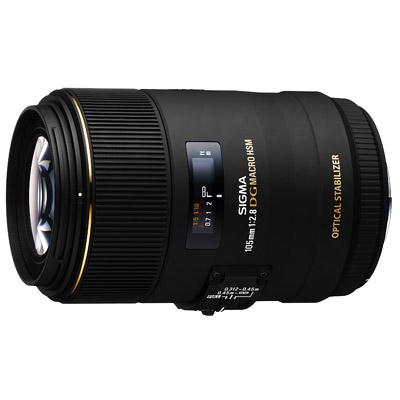 | Sigma 105mm f/2.8 Macro DG OS HSM Pros: Quality of Build; Metal barrel; Sharpness; Optical Stabiliser (though was very noisy on mine); HSM AF; Value, when compared to Nikon's own version; Standard kit, which includes two lenshoods (one for FX, a longer one for DX) and a decent case. Cons: Weight; Noisy stabiliser (on mine) Opinion: I bought this fine quality and well respected macro lens in mint condition used - and about a year later sold it back to the same seller (online trader) for only about £50 less. It was to replace an old plastic Tamron SP macro 90mm f2.8, which was very competitive in its sharpness but had an impossibly slow and basic screw-driven AF and no stabilisation. I then found that I could not sell this Tamron (I might have been able to give it away?) in the end and ended up with two macro lenses! The new Sigma was nearly twice the weight of the old Tamron and basically, I never took it anywhere and proved that I just don't do enough macro to justify owning it. IF I could afford to buy one now though, then I'd get the Nikkor 105mm VR, as it is supposedly just a little sharper than the Sigma and would banish the risk of having a really noisy stabilisation system. Or perhaps a new Tamron 90mm VC. (lighter). I did also find the Sigma's fastish f2.8 aperture 105mm on DX (157mm equivalent) to be quite useful to have with stabilisation, for hand-held night shots and live music photography. For now, I'm back to the old plastic Tamron, which does its job, at least. (Focused manually, which is how true macro shots are usually undertaken) However, if you are a true macro user and want a top quality optic, for the money, you cannot lose. As I found out, without a current replacement from Sigma, there is a strong market should you wish or need to sell it back on again, so your risks are low. 9/10 sent on November 21, 2017 |
 | Nikon F100 Pros: Semi professional Nikon film body; Excellent ergonomics; Robustness and build; Features, including 1/8000 sec top shutter speed, spot metering and 5fps drive; Use of any lens of any age, with the F mount, at the time of camera's production. THE SLR for the advanced enthusiast to aim for at the time. I used mine for years until finally going straight to the FX digital D700, where most of the controls immediately came natural to me. Cons: None other that it is almost redundant in these days of digital. Opinion: Like comparing the current D750 to the D5, or earlier D700 to the D3, the F100 featured most of the advantages of the flagship pro F3, but in a slightly smaller/lighter and less expensive body. I still have my F100, not that I am considering using it again, but because IF I could sell it for more than just an insult, it would remain of more value - it still fully works (personally, emotionally) to me than it would be to someone else. Difficult to give a score or evaluate compared to what is available today, just that I remember it fondly, it is part of my photographic journey of learning and I would say that other users of the F100 would feel much the same. sent on November 16, 2017 |
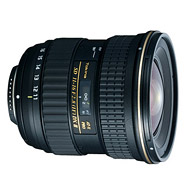 | Tokina AT-X Pro 11-16mm f/2.8 DX II Pros: Specification; Constant f2.8 aperture; Sharpness at all apertures; Solid build; Reassuring and positive handling; Manual focus ease of use and accuracy; Good lenshood and caps as standard; Sensible and 'standard' wide 77mm filters; perhaps price now as a used example. Cons: Limited zoom range; Hopeless flare in bright sunshine; Archaic and Slow A/F; Price New, Nearest focus could have been closer, it is difficult to creatively utilise that f2.8 aperture. Opinion: Basically, I use my 10-24mm Nikkor f3.5-4.5 almost all the time, especially for sunny high contrast images, with which it excels. And, basically, I use this Tokina at night, bolted to a tripod, manually focused at infinity. I had seen very many Astronomical shots, often with the Milky Way included, taken at 11mm and f2.8, that looked amazing and professional and were sharp even into the corners. I had always wanted one but having seen the MkII had (perhaps) improved the flare issues, I waited. Then, the larger sized and ranged 11-20mm f2.8 was released and I wanted that one! However, the price new of the 11-20mm is still way beyond my means. I never handled or used the original 11-16mm, so I cannot compare. I eventually bought an almost new MkII from Ebay from a private seller at around half the new price - I happened to be lucky to got it for so low a price. I also like using the Tokina in dark church interiors, a real interest to me, as the wide aperture performance is much better than the Nikon, especially in the corners and also due to around half the levels of barrel distortion of the Nikon at the widest settings. Now, the Nikkor 10-24mm isn't a bad lens to use at night, especially at 10mm, as long as you start from f4, which pulls in the otherwise poor corners in, a little. However, the Nikon is a consumer grade lens with a typically poor manual focus control, both in accuracy and the in that the distance scale is not accurate either. Typical of all variable aperture zooms, that focus shifts throughout the zoom range. You might presume that depth of field would cover this due to the wide angle of views involved, but you'd be surprised and when you are aiming for minimal post production, to keep the iso as low as possible, this aspect matters. The Tokina in contrast is easy to find infinity, which is almost exactly as marked on the distance scale and then, you can then shoot your night's shots at any setting without any further adjustment - even when you move the camera around on the tripod. The brighter image in the viewfinder from the f2.8 is more noticeable than you might think. The relatively poor flare resistance is not so much of a problem, at night , it can actually be an advantage. Nikon's better lenses have quite an aggressive contrast, not just from the better multicoatings and this makes the images look sharper - which is what most photographers want. At night, especially out in the landscape and away from industrial light sources provide a much smoother tonal range with better shadow detail and allowing the natural sharpness of the lens to really shine. I have used the Tokina in London, at night and with good results, it is only very strong light sources that flare, faring much better than say, a bulbous 14mm f2.8, which would have problems from almost any light source. I have used the Tokina in AF mode, compared to the Nikkor, well, there is no comparison. One is very quiet and quick, the other is slow and noisy. But the Tokina proved accurate enough, when it finally focused, that is! So, I could not live without my Nikkor 10-24mm. I could live without the Tokina but it is nice to have both and to use them at their particular strengths. But when you are trying to wrestle with a tripod in a field in the middle of the night and you can barely see anything, the reassuringly easy to use pro grade Tokina is a pleasure to use. IF you drop it - perhaps due to wearing gloves in the freezing cold (onto a normal ploughed field, NOT a hard surface such as a pavement or road) then I'm sure, you'd just wipe it off and re-attach it and continue. However, I know from personal experience, such could potentially damage the Nikon beyond repair. sent on September 27, 2017 |
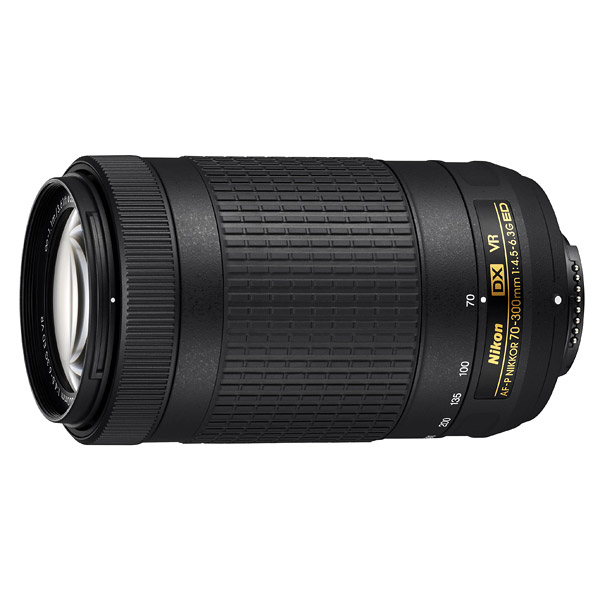 | Nikon AF-P DX 70-300mm f/4.5-6.3G VR Pros: Instant, silent AF; Sharpness; Lightweight; Compact, VR; Price (if bought carefully) Cons: Incompatible with ALL Nikon DSLR's before the D7100 (and responding 3*** and 5*** series; No VR or AF switches on the lens; Slow max aperture especially at 300mm; Cheap and very boring looking; No lenshood or accessories provided (Juza listing is wrong in this aspect) Opinion: Prolific lens reviewer Ken Rockwell (USA) always wrote that he would only use Nikon lenses and not independents as there was no guarantee that the non Nikkor lenses would work in the future. WELL!! Here is Nikon automatically eliminating users of older DSLRs other than (mostly) current cameras that simply will not work at all with this new lens, aimed squarely at the beginner. SO! How is myself an advanced photographer of 40 years experience using one of these nasty lumps of plastic? Well, my just over one year old Tamron SP 70-300mm VC (my second example, as I had so loved and used the first for over 5 years but the AF motor became very noisy, unreliable and then broke. It was still under Tamron's 5 year extended warranty but I cannot get past the camera shop who I had bought it from, who say that in their opinion, a bit of sand or similar had got inside and therefore it was my fault and not the lens', or Tamron's. It was going to cost £100 just for an independent repairer just to look at it, let alone replace the motor. So, putting aside the Pro spec Tamron until I can afford the time it would take and cost to repair it, this little light Nikkor caught my attention. It was on offer from Nikon and from ebay on a grey import, it was cheaper still! (less than £200). I had quickly tried it in a different camera shop, moaning about Nikon's compatilbiity issues and so tried it on my D7100. When Nikon and others say "Quick AF", it is INSTANT. And absolutely silent, which is quite disarming, at first. From the shop doorway, I shot a banner 100 meters across the road at both f6.3 and f10 at 300mm. I showed the shop assistant on the camera screen the image as I zoomed in - at both apertures, with the yellow zoom window at its tiniest (we're talking of actual pixels, then zoomed in yet again) you could still read the wording on the banner. He looked amazed. I then read an online review www.ephotozine.com/article/nikon-af-p-dx-nikkor-70-300mm-f-4-5-6-3-g-ed-vr-review-30569 where the lens was awarded 5*s and Editor's Choice and it seems that this lens outperforms all previous Nikon 70-300mm's, including the expensive FX AF-S VR. I then ordered the lens and the appropriate LL-77 lenshood - don't buy the overpriced Nikon (mine is JJC, £12 Amazon) and after the weighty, (this Nikon is almost half the weight) rather noisy and slow AF and VC of the old Tamron, this understated Nikon was a joy to carry around along with a wider zoom on a long hot summer's walk, where there is plenty of light and you are wearing few clothes to cushion heavy rucksacks etc. The shots on the Canal that day, often against the light, on into dusk, were all perfectly focused and I got many nice images with almost no effort. Manual focus override is actually very easy, keeping the shutter down halfway (this is always required to focus, whatever distance you had the lens previously set to) and then the other hand turn and hold the well geared and accurate MF ring at the end of the lens barrel. The issue with older cameras, such as my D7100, is that the firmware required to enable the AF and VR (which is otherwise ALWAYS enabled) doesn't seem to be available. New cameras access this via menus on their cameras. So, with constant AF (unless manually overidden) and permanent VR, this would make the lens totally unsuitable for tripod work? Well, I didn't really buy the lens for this use but had a chance to take a 10 second night time architectural shot at 300mm. On a Manfrotto BeFree tripod! (Which is totally unsuitable for a equivalent 450mm lens!). Not only did the lens hold the focus but somehow, the image was sharp! Whether the VR actually remained active throughout the exposure or how it was achieved without shake, I was very pleased. However, this is not an endorsement or fact that this would apply to other occasions or other users. Why Nikon are selling a non VR version as well is a very good question. The VR will get you down to 1/20 sec at 300mm and the lens all in does a really good job, in terms of contrast, colour rendition and sharpness. It focuses reasonably close too and out of focus areas look quite good as well. Would I recommend this lens? Well, it depends on who the photographer was and what they were using it for. It's far from being a professional lens, but in the right conditions it can create images as good as any other lens. I'm sure it would be a better buy than an all in one superzoom of 18-300mm, which would have the same maximum aperture at the long end. But unlike that superzoom, with almost unnoticeable pincushion distortion and a usability at every aperture - especially at f6.3 300mm. It would be too slow for most serious Street and Candid and Events photography, as well as Sports and Wildlife, but for a cheap light lens great for landscapes and travel and is of really surprising sharpness, I am really very satisfied with my purchase and have no regrets. Overall score 9/10 sent on July 23, 2017 |
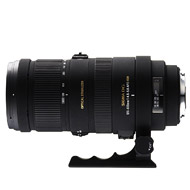 | Sigma 120-400mm f/4.5-5.6 DG OS HSM Pros: Construction; Stabilisation; Affordability now secondhand; HSM AF fast and quiet; Zoom lock (essential, but can be fiddly and difficult to engage) Cons: Weight, far too heavy for its specification - the figure given in the Juza spec is 100g less than it really is; AF apparently incompatible with lower end DSLRs; Stabilisation on mine is noisy Opinion: I'll say this honestly that comparing this lens in all manners to its predecessor, which I had (and mostly hated) the 135-400mm Apo, is like comparing an old Skoda with a Passat, but is still way off the mark of the lens that I will one day buy, Nikon's new G 80-400mm VR. I used to own Nikon's old D 80-400mm with its very basic VR and poor 400mm sharpness but traded it in for exchange for this Sigma's bigger brother, the very popular and transforming 150-500mm OS, which I still have and occasionally still use. Sigma have, of course, replaced that lens with yet another leap forward in every aspect, with the two 150-600mm's. They have not replaced the 120-400mm, however and are unlikely to, everybody wants longer and longer focal lengths, of course. But those lenses (and my 150-500mm) are just too big and heavy to carry around as a general purpose long zoom, whereas the new Nikkor 80-400mm G is around the size and weight of a 70-200mm f2.8, big, yes, massive, no. Even on DX, 400mm is generally too short for birds and wildlife, unless you are in a hide, in which case you probably specialise in wildlife photography and so have a better fixed lens, with the possibility of extending via matched extenders. My friend, who passed on this 120-400mm to me for a modest sum, bought it for birds on his D800, found it too short and far too heavy - and has recently gone to Mirrorless anyway. I use a 400mm for its isolation and compression properties in the landscape, both rural and urban. 25% more telephoto gain over my Tamron SP 70-300mm VC might not seem much but it can make a real difference. However, the Sigma weighs 1kg more than the already quite heavy Tamron 70-300mm VC, yet in partnership with a Nikkor 18-140mm VR and 10-24mm Nikkor, in a rucksack, makes for a weighty but not too uncomfortable way of having the range in 35mm terms, 15-600mm, in just three lenses, all with good to excellent quality on the D7100. As for sharpness, the Sigma 120-400mm is good but nothing much more than that. Often its haze and poor light that seiously degrades image quality and in theory should be similar to the 150-500mm. Amateurs and enthusiasts will like it as you can get some very decent quality if you stop the lens down a bit and use it properly, but professionals will not. But professionals had the same attitude to the 150-500mm, but they could afford Canon L, the new Nikkor or exotic fixed lenses that cost the same as a good used car. I've generally avoided maximum aperture so cannot really say how well it performs at 400mm f5.6 but I guess that images would be usable and when some extra sharpness is added in processing. My Tamron 70-300mm SP would easily beat the Sigma at all focal lengths, even at its maximum of 300mm. I've not really tried at closest focus either. So, I can only recommend if you're after reasonable and affordable quality and price and don't pay very much for one either. Reselling could be a problem in the future too, or at least for a decent price. For me, it's an interim stop gap but unlike that old and awful 135-400mm where I felt that my pictures were rather wasted by the often poor (especially 400mm) image quality, I know that this 120-400mm gets me good results for quite little money, but at 400g more than the new Nikkor 80-400mm, the overriding feeling is it's just a bit too heavy. In many aspects, 7/10 would be the right score but if you consider that it can be bought for £300 (500 Euro?) for a good used example and when compared to the alternatives and for the overall package (you also get a padded case, deep and decent hood, metal tripod collar) with its HSM focusing and effective stabilisation, then I have to award 8/10 sent on January 26, 2017 |
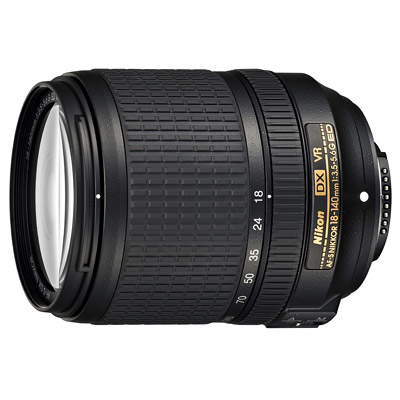 | Nikon AF-S 18-140mm f/3.5-5.6G ED VR Pros: Simple and Honest Lens, Good Image Contrast and sharpness, Surprisingly nice zooming and general handling, Quick Focus, Effective VR, good price if bought as part of a kit or split from a kit (white box) Cons: Lack of Distance Scale, Lenshood not supplied as standard; Strong distortion, especially barrel at 18mm; Price, too expensive if bought as separate lens (Gold box) - many shops won't stock it as a separate for this reason. Opinion: A standard zoom that you can just put on your Nikon (mine is D7100) and go out and use. You know that it will always do the job. Nothing pretentious or extravagant about it at all. Replaces the non stabilised 18-135mm Nikon. Basically, I sold my aged Mk 1 Nikkor 18-200mm, which I never really liked and by buying a new, split from kit white box on Ebay, only had to find a few pounds extra. Because of the shorter range than the 18-200mm it handles much better, never feels cumbersome and more importantly, unlike that 18-200mm, is reliably and consistently sharp at all normally used daylight apertures and is still fully usable at f5.6 @ 140mm. Build Quality is acceptable and adequate - you won't be celebrating its robustness but neither will you have real reason to question it either. Like all modern Nikon lenses, drop it and it's broken but if used normally, will last a good few years, until you upgrade. Equivalent to a still very useful 27-210mm in full frame terms, it's a really useful walkabout landscape lens. I carry a longer lens, too, such as Sigma 120-400mm and always carry a Nikkor 10-24mm for wider use. I would prefer a distance scale and I think it is wrong for Nikon to not include a lenshood, I always carry and use one but this one is not too expensive (20 Euro) on Amazon. There's no zoom lock but mine shows no creep, the zoom is really nicely weighted. Close focus is about the usual for such a zoom these days, useful for picking out a flower and such at 140mm but not much more than that. Strong barrel distortion at 18mm and pincushion at longer lengths yet still less than that 18-200mm and the characteristics are uniform and so are easily correctable in processing. In conclusion, until Nikon (or a third party) can reliably convince of very good image quality (a Sigma Art, perhaps??!) that cover a longer reach then this lens will do. It is unexciting and rather boring but is still a good dependable lens for just about anyone and of any standard, The Juza score of 9.2 seems very high, meaning a good number of users awarded a 10/10, I think more like an 8/10 but then thinking what it cost me and what it delivers, then I'll go with 9/10. sent on November 18, 2016 |
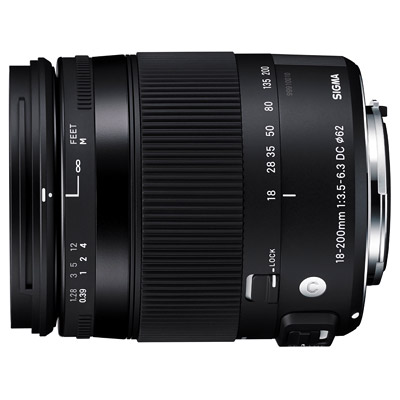 | Sigma 18-200mm f/3.5-6.3 DC Macro OS HSM C Pros: Very Compact size and weight; Smart new 'Contemporary' design and appearance; Price; 3 Year extended warranty, Pleasant zoom action; 'Close Focus' ability; small 62mm filters; Zoom lock Cons: Back focusing issues (complex and untreatable); slow f6.3 at 200mm; OS does not give confidence; manual focus can only be engaged by disengaging AF on both lens and camera, vague and imprecise action. Lens coatings and contrast not up to Nikon standards. Opinion: Very good price new (but still more than Tamron) to replace my old and rather tatty and not nice to use Nikkor 18-200mm VR Mk1, which I sold, whilst there was some value in it. I decided that even the Mk 2 Nikkor is basically the same optical configuration as the 2005 Mk1 and that Sigma, with its up to date Contemporary range might well compete favourably, if not exceed Nikon's aged offering, now. Whilst the Contemporary Sigma does not have the high contrast and punch of the Nikkor, it still is sharp and detailed at lower focal lengths. Despite some difficulty getting properly sharp results in dull, flat lighting at 200mm with the Sigma, in good light it is sharp enough throughout the focal range. However, the real problem was a hard to diagnose back focusing issue, but whilst I eventually dialled in -12 into the D7100's 'AF Fine Tune' data bank, this figure was only applicable at 200mm and focus was visibly 'out' by zooming out to 135mm, getting more and more out as the focal length widened. I wasted a lot of good shots at longer lengths previous to this as when the focus was set at default and at 18mm, this was correct. In the end, the only true way I could get reliable sharp focus was to focus manually and this lens is NOT designed for such, with the rather dark long end and loose manual focus ring. It was suggested that I would have to buy the Sigma USB Dock to correct this issue but I do not have any issues with my excellent 17-70mm f2.8-4 Contemporary and my Sigma Art 30mm f1.4 had an simple issue that was easily correctable, so I refused to pay an extra 15-20% for a gadget that I would potentially only use the once (and the shop did not stock it anyway). So, I insisted that the lens was not suitable for purpose and demanded a refund. I did get some nice images from it though and when it worked properly, the zoom and handling was good. I also found the OS system did not seem to hold the image steady at all, though it seemed to be working, which at 200mm can be usueful simply for composition. The lens' light weight, compared to the extra 150g of the Nikkor meant initially some camera shake, despite the OS, as I was simply too optimistic in its abilities. IF you can find a good example, then potentially, this might be a great lens, but for the more serious and advanced photographer, perhaps the excellent price/features ratio is just too high a demand to compete favourably with the more than twice the price Nikon. My option is now a used Mk2 Nikkor or more likely, a more modern design, albeit lower specification and possibly more suited to the D7100 sensor, the now popular 18-140mm. As it is, my need for such a lens is less to do with just using one lens but to bridge the gap between my Nikkor 10-24mm and Sigma 150-500mm. I initially awarded (which I cannot withdraw) a score of 9/10 but with the issues I encountered, I can now only offer 6/10. sent on September 03, 2016 |
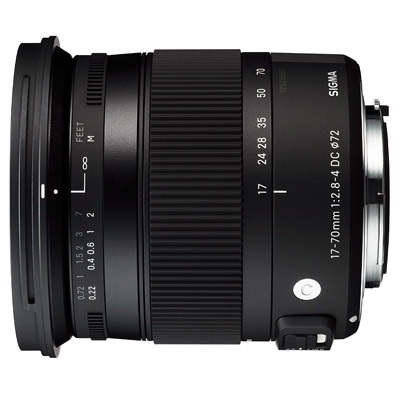 | Sigma 17-70mm f/2.8-4 DC OS HSM Macro C Pros: Quality of build and finish; Smart appearance; Unique specification, usable at all apertures; sharpness at most settings; Handling; Stabilisation; Value; Close Up facility (it's not true macro); AF accuracy (on my example and with D7100) Cons: Manual focus can only be engaged by switching off AF on lens and camera; Focus ring rotates (but not front element, so polarisers etc are no problem); Resistance to flare worse and less contrasty punch than with Nikon marque lenses Opinion: Unlike the majority, standard lenses are my least used optics, most of my photos are taken at 10mm, or 300mm. But, of course, a good standard lens is essential. I originally bought the previous model secondhand for my (then) D7000 and I liked it, both the focal range, sitting within my standard kit of Nikkor 10-24mm and Tamron SP 70-300mm VC. But its wide aperture performance, especially at the edges weren't good enough for the live music photography I was doing then. So, I sold that lens and got both a Tamron SP 17-50mm f2.8, which was a brilliant little lens and a used Nikkor 16-85mm VR, which is also very sharp and great for walkabout landscapes. I came to dislike the little plastic Tamron as it was horrible to use, with its shuddering zoom action and didn't suit my big hands at all. I sold that and got a used Tokina 16-50mm f2.8 Pro, which is much better to use than the Tamron and is wider and generally performs just as well. Basically, I now needed a stabilised fairly fast standard zoom for when I am wandering about towns and landscapes before dawn and after sunset and without a tripod. The 16-85mm is still very capable but is very slow, especially at the longer end and at night for moonlit shots and fireworks, it's almost impossible to focus accurately, even manually. It's also quite tired now, being 5 years old - I will still use this lens, for bright days out. The new Contemporary Sigma is updated, both optically and cosmetically over the old one and has three special elements, so you get quite a lot of lens technology for your money. From lens tests I've seen, general opinion is that the wide end performs about as well as the previous model (sharp in the centre at all apertures, but slightly soft in corners up to about f4.5) but the longer end is much improved, meaning that even f4 at 70mm gives a fully usable crisp image, with a nice bokeh. It's a lovely lens to use, the AF working perfectly, even in almost dark urban scenes, meaning that the awkward manual focus selection is seldom needed. The extra one stop brightness over my old 16-85mm makes a lot of difference too. I did find though that against the light, the largish front element, which does not appear to have been multicoated much, does flare quite strongly against strong light. And, even with a good polariser, the colours and contrast are just not up there with the Nikon. I was also slightly worried by very strong street light sources creating a smearing effect, but trying this genre further, found that this was not so much of a problem as I previously thought. So, this nice compact lens is a good all-rounder - not quite professional enough, optically, to be used just for night shots - but still does a fair job and better when stopped down a little - not really a portrait lens (f2.8 needed for that) and not really a macro either - one-third life size is handy to have for the occasional flower head and seems to render these well too, but certainly not true macro. But, as a lens that does most things well and just as well, or even better, than the competition and considering the good value too, plus the latest and stylish design and finish, then it's a most useful lens. The OS works (on my sample) silently, to the point where I was not sure if it was working) very well too - I got perfectly sharp results at 17mm and 1/4 second! Out in the landscape, then that might be too optimistic but it certainly adds to the usefulness of the lens, which, in conclusion, is not perfect, in almost every department, but very good in all, so 9/10 from me. It's also worth noting that it's fitted with a reassuring brass mount and focus scale AND reasonable lenshood, the latter two being increasingly left out these days, in the pursuance of profit from greedy and overpriced marque brands. sent on August 11, 2016 |
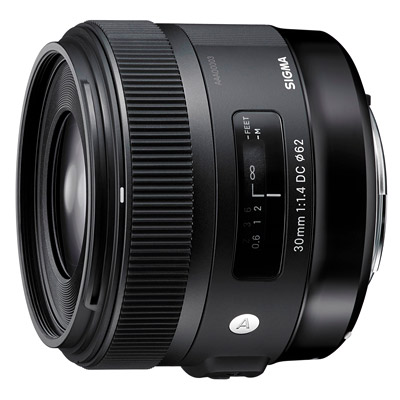 | Sigma 30mm f/1.4 DC Art Pros: Build, Ergonomics, Finish, Sharpness, Useful angle of view, A pleasure to use, lenshood Cons: Pronounced barrel distortion,Back focussing AF, backlit colour fringing at wide apertures noticeable in some conditions, image quality is/reported to be less than FX Art 35mm f1.4 and 50mm's, less common pre-owned in Nikon mount, 62mm filters large for a standard fixed lens. Opinion: Replaces my Nikkor DX 35mm f1.8, which did the job and had fine sharpness throughout the aperture range but was not a pleasure to use - and so I didn't use it much. The EX predecessor to this Sigma was apparently very popular but suffered very poor edge sharpness wider than f4, for some reasons, this Art replacement has not been that well received or that popular. Why? Possibly because it is so overshadowed by the (reported) ground-breaking performances of the FX 35mm and 50mm's f1.4. I've not had a chance to try either of these but would say that the 30mm DC is around 40% less expensive than the 35mm DG and has just one aspheric element, whereas the better two have more. So, look at this 30mm at providing a solid but not outstanding resolution curve, equating that of a more traditional 50mm f1.4 - though it out performs my old Nikkor D 50mm f1.4 wide open by a good distance. With this Sigma, you can use f1.4 should you wish to or need to use it, Open aperture's central definition and contrast is impressively very good, but won't blow you away. Corners don't fall off noticeably wide open either and on stopping down it gets better. At f2.8, interior shots handheld at 1/30 sec inside my local cathedral are punchy and sharp when viewing at actual pixels, across the frame, which is about what you would expect from a 'normal' quality 50mm f1.4. You could shoot between f2.8 and f8 happily all day knowing that resolution exceeds that of all current DX sensors. Smaller than f11 and diffraction kicks in and f16 is the minimum aperture. I also like the 45mm equivalent angle of view, that little bit wider than the 52mm of the 35mm Nikkor DX, which was just too long for street and environmental shots, which is where this Sigma excels. It's the same angle of view that the eye naturally takes in. Build quality and solidity is a major plus but is twice the weight of the little plastic Nikkor 35mm f1.8 DX and is almost as heavy as my Nikkor 16-85mm VR! But as it stubby and short, this size and weight makes it seem heavier than it is and on the D7000 does make for quite a well-balanced if rather heavy combination, which I rather like but not everybody will. Whereas the Nikkor was popped into a pocket for emergency lowlight use, the Sigma is carried like a celebrity, with its own proper case coming as standard. Now, the downsides - the AF on my sample backfocusses by quite a degree - a minus "12" (scale 0-20) is needed to be set in the D7000's 'AF fine tune' data bank. That figure is actually less than my Sigma's 24-70mm f2.8 and 70-200mm f2.8 Apo HSM, which require even more adjustment. The new Sigma "Dock" might rectify this but that's an option I don't want to try and is yet more expense, after all. For me though, the biggest fault is the rather marked barrel distortion - for portraits and live music shots this is not an issue but for interiors, then it definitely is. For a fixed focal standard it is unacceptable, but for me is the only bad point in an otherwise almost perfect package, a lens that is a joy to have on the camera and to use, to be proud of and which is an extremely sharp lens in almost all conditions. Many Nikon users will find their little cheap Nikkor 35mm f1.8 DX's perfectly adequate and will not feel the need to spend twice as much getting the vastly superior build quality, very usable f1.4 aperture and very much more pleasurable to use Sigma 30mm f1.4 Art. Canon and other users have less choice and so may be a much more attractive option. 9/10 sent on February 19, 2016 |
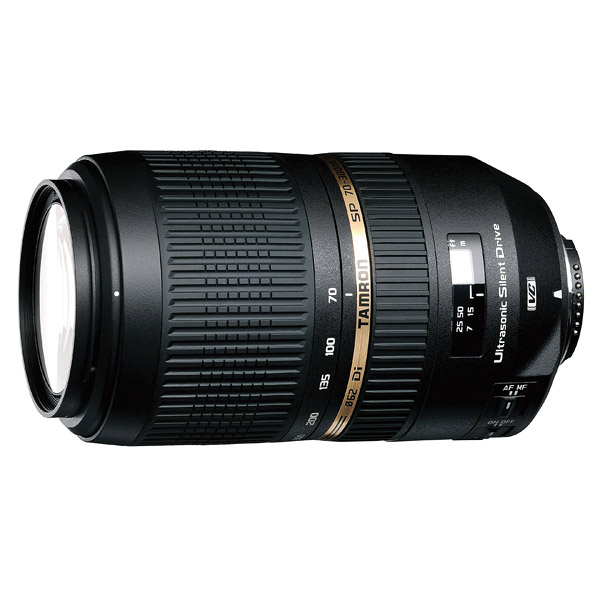 | Tamron SP 70-300mm f/4-5.6 Di VC USD Pros: Usability, as a telephoto zoom package; image quality; effective vibration control; Price; Build/cost ratio; decent lenshood Cons: Focus isn't the quickest; Opinion: Update: I've replaced the old model with a brand new exact same one (apparently, the buyer of the old lens had it repaired and a loose wire inside was responsible for the hit and miss VC fault, so not necessarily a fault with the design) and upgraded the D7000 to the 24mp no alias filter D7100 and the images are now even sharper! Review: My 5 year old model has produced over 25,000 images and it still is THE zoom I use for most telephoto applications. The VC function has now become hit and miss, now, the only sign of wear it shows and if I were to replace it (not worth cost of repair), it would be with the exact same model. Being a Nikon user, I cannot use the Canon L, which I understand is the only lens of the same spec that competes with this Tamron. And why not the Nikkor 70-300mm f4.5-5.6 VR, that would surely be my target? Well, I had one of those and it broke quite quickly. The Nikon did display excellent contrast and sharpness at lower focal lengths and in the centre of the frame and its VR is quicker to activate and quieter in operation. This makes the Nikon better than this Tamron for action and wildlife, where central image is more important. The Tamron SP however, is the better all round lens for travel, architecture and landscapes. The VC, once activated (takes a short time) literally holds its subject like glue. The distortion is much less than the Nikon (the Nikon had such pincushion at 300mm, you could see it in the viewfinder!) and the plentiful sharpness is more even and across the frame. Even the so difficult 300mm at f5.6 produces a very acceptable image - I'd be happy to shoot at this to isolate my subject - and often do. It won't be as sharp as a fixed focal, of course, the contrast a little less too, I find f9 to be the sweet aperture here, f8 at lower focal lengths. but in the everyday practicality, the Tamron is good to use and one can have confidence in it. Of good solid weight, it can be handheld with confidence, though if I have a criticism, the rather front weighted bulk on camera means it can be difficult to use on a tripod, especially in the vertical position. It's not especially easy to use in manual focus but SO much easier than the Nikon, which had an awfully thin and awkwardly placed focus ring. And if you think that such lenses are only used with AF, the true landscaper will often find very low light and low contrast subjects, such as after sunset. With the D7000, AF can find and lock onto subjects to a surprising degree but when it loses it, it annoyingly goes through the entire focus path and you have to interrupt the shot, and reset the focus manually and your subject is gone. But then, that can happen with almost all lenses, after all. Lastly, I was pleasantly surprised to find that I could use my Sigma EX 1.4x APO teleconverter with it! And with pretty fair results, giving a 560mm equivalent foccal length on DX, even if I do choose to use f9 or smaller and best of all, the VC works then too, reigning in all that huge potential for severe camera shake. Has to be as near to 10/10 in practical terms, especially when the modest price is concerned. If nothing else, this lens has been the 5th most used optic by Juza users for as long as I've been on the site myself - we can't all be wrong! sent on December 25, 2015 |
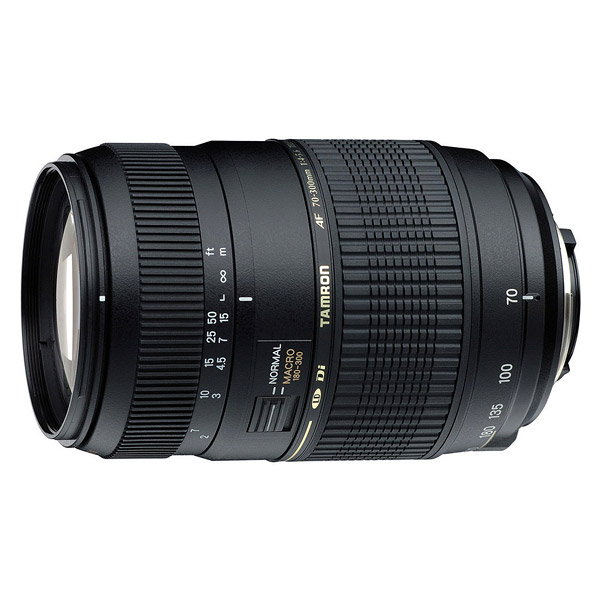 | Tamron 70-300mm f/4-5.6 Di LD Macro Pros: Cost, Performance up to 200mm Cons: Lightness (yes, though that might be a plus to many), Performance at 300mm, fiddly and awkward 'macro' switch Opinion: Tamron's evergreen budget FX telezoom and with the low price in mind, it is not as bad as you might think! Tamron have a long history of being able to produce pretty decent zooms of around this length, or shorter, such as the hugely popular Adaptall 80-210mm f3.8-4. I now have this lens' current sister SP version with VC, which is the best in class but for a few months, I owned this very light Di lens, which I understood even includes some plastic lenses inside. But, being used to a much heavier Nikkor 70-300mm VR (which I dropped and destroyed, hence the lack of a tele zoom) and without any form of stabilisation, this little Tamron is so skittish, it was almost impossible to get steady shots in all but the brightest conditions. One got used to these characteristics of course and I was able to get some very decent shots in London over several days, including a day out at London Zoo. The sunlit architectural shots, especially at shorter focal lengths were very sharp and undistinguishable from other lenses of this type but beyond 200mm or so and in less contrasty light, the performance suffered, though naturally stopping down helped. The close up feature, via the fiddly switch, which will not allow you to follow focus from close up to infinity, ie, tracking a flying away butterfly, as you have to stop, flick the switch and then reframe again - so not good, but consider this as a bonus and not a reason to buy this lens. So, as others have said, a good little budget lens that is good for normal 'snaps' and to start off with. You soon will find its faults and want to upgrade but don't dismiss as a complete waste of time. The competitors seem to be Sigma's cheap effort, but that is more expensive, or Nikon's DX 55-300mm, with VR, which is more expensive, has VR but is DX only but is probably better performing at longer lengths. There's also Nikon's basic 'G' lens at a similar price to this Tamron. I've not used or handled either the Sigma or either of the Nikons mentioned, so cannot speak with authority. 7/10 sent on October 17, 2015 |
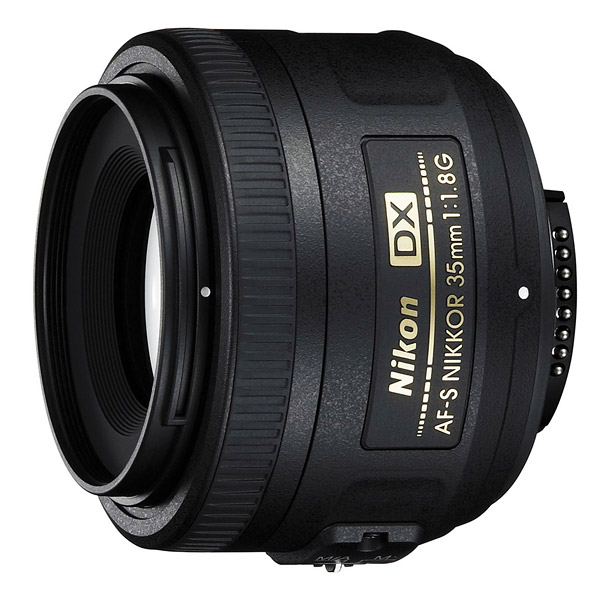 | Nikon AF-S DX 35mm f/1.8 G Pros: Price, Performance, Size, Weight, Availability, small 52mm filters Cons: No focus distance window Opinion: I believe that Nikon is unique and unusual offering a real option for offering a fastish standard lens solely for DX use - and in them doing so, in a very well performing and quite well made compact package, has made this lens a really big seller for Nikon. Otherwise, we'd only have the Sigma EX, or Art (now) 30mm f1.4, which I was wanting to buy but there are so many of these little Nikons around, I was able to get a mint used one with lenshood, from a reputable seller with 6 months warranty - for just over 100 pounds sterling. That's the price of one Lee filter! There are no issues over image quality, even at f1.8 it is good to go, lower contrast in the corners and edges might make it look less sharp wide open and unlike those Sigma's, the edges always hold up well along with the very sharp centre. And none of those silly back focus issues that seem to still plague Sigma. On the D7000, it is a nice handling package, you can shoot freely and easily and the AF is good, though not lightning fast. Manual focus is OK too. My main gripe - and the reason why I haven't bought one up to now, is the lack of a distance scale. Big deal, eh? Well, if you're shooting stars and want infinity or at night generally and the viewfinder is too dark to focus, then a distance scale can really help, though with modern polycarbonate lenses, the accuracy of marked infinity is often variable. My uses will be for a back up fast standard to keep in the pocket to use alongside my usual standard zoom, for night time city street shots, live music and interiors of churches and such. At f1.8 and focussing from about 2m and closer, there can be a good bokeh effect, it's not the smoothest of blurs but then it's not really designed for such, especially also due to its focal length. One day, I'll buy the excellent Sigma Art 35mm f1.4, to use on both FX and DX, but in the meantime, this cheap and cheerful little lens is a good substitute. I score 9/10, the point taken off mainly due to that lack of distance scale. sent on October 12, 2015 |
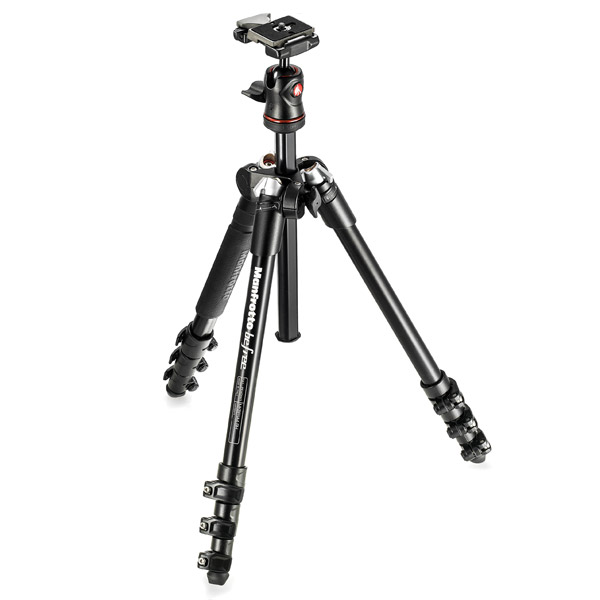 | Manfrotto BeFree Pros: Design, Folded up size, Rigidity, quality of materials and construction, sensible price Cons: Fiddly base plate (aren't ALL plates a bit of a pain?), limited height, I'm not a fan of a ball/socket head Opinion: Rated so highly on Juza and by its contributors - and used by Juza the photographer himself (albeit the carbon fire version) AND a photographer friend who went on a holiday of a lifetime to New Zealand, I bought one of these tripods for 120 pounds, brand new, which is 20 pounds less than is the usual price. My needs were for a compact tripod that I could carry about in a rucksack which I could use at either the start of or end of the day but would be light enough to carry about for the rest of that day, as I have no car, I can not leave it somewhere else. That is the big problem with my big heavy Slik. Trips to London will be the primary use. I was intending to use only my DX D7000 and shorter focal lengths, such as my most used lens, the 10-24mm. At around 2 metres tall, I DO find using the BeFree quite a nuisance to use, as even at its highest, I have to bend right down to use it, but advantages are that I get great low angled architectural shots! As yet, I've only really used it on non windy days and on good, man made surfaces and use the self timer set to 5 seconds. But I have not seen any camera movement at all, despite exposures of 30 seconds. I don't like the fiddly base plate, but there again, I've not yet had a tripod that didn't have a fiddly/annoying base plate! What did surprise me though is the sturdiness of the tripod when set up with 3 of its 4 legs extended - you can push it with a hand and it will not bend or flex, which is excellent and within its obvious and sensible limitations, this is fine piece of equipment, which whilst not being cheap, is a good sensible price. It will help me get me far more shots in a day, especially when visiting cities and in it being able to doing that, I have to award 10 out of 10. I was also able to greatly extend the warranty by registering it with Manfrotto online. sent on October 09, 2015 |
 | Tamron SP 17mm f/3.5 Adaptall-2 Pros: Compact; lightness; sharpness from f5.6 to f16; can be a cheap entry into full-frame ultrawideangle; fair distortion characteristics Cons: Inabaility to use on lower spec DSLRs; Adataptall - 2 system is 1980's technology!; specific lenshood; manual focus; very soft corners at f3.5; 82mm filters are expensive; manual focus; often sold secondhand without the designed lenshood. Opinion: With so many negative points outlined, you might wonder why on earth one should even consider this lens! True - I bought mine over 20 years ago, for my Nikon film F100 as it bridged the gap between my Sigma 14mm f2.8 (a later version of which I still use today) and 24-70/24-120mm zooms. This little Tamron is about the size of a Nikkor 20mm f2.8, which is small and light enough to slip into a coat pocket. I now have, for my FX D700, the best-in-class Nikkor 17-35mm f2.8 now, which is better in all departments but which is huge and heavy and you need a big bag to put it in! Today, you have to buy not just this Tamron lens, but also the appropriate Adaptall mount for your camera, which can cost up to a further 20 pounds! You attach this to the lens and then attach to the camera, making sure all the mechanical contacts lock into place. These mounts are actually remarkably durable but like anything can break. You then need to use (in Nikon's system, at least) the 'Non CPU lens data' bank to dial in the maximum aperture and focal length. Ironically, Nikon themselves never made a lens that covered 17mm that didn't have some kind of electrical contact and the nearest option is 18mm....Yes, confusing! Then, you need to make sure that the original designated lenshood that fits over the end of the lens and takes 82mm filters and lenscap is included. Sadly, almost all the ones I've seen on UK Ebay don't have this or even mention it. You need this hood just to attach a lens cap, for a start, so it is essential, partly as the largish front element is not deeply recessed and will get easily scratched. Performance - forget anything wider than f5.6; not good in the centre and so soft in the edges, you'll think it was out of focus. But at f5.6 to f11, it is visibly as sharp as anything - see the Borough Street Market shot. So, in conclusion, I cannot recommend this lens, now. It's fine if you know all about its quirks and how to get the best out of it but even then, it's hardly a lens you can use much, due to the performance wide open and its fixed focal length. sent on September 09, 2015 |
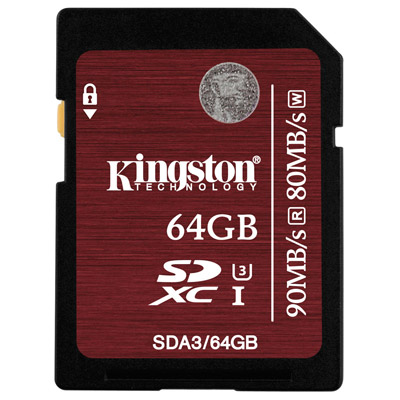 | Kingston SDXC 64 GB r90w80 (90 MB/s) Pros: Price/Specification ratio, high 80 mbs write speed, Cons: Less reputable brand, perhaps? Opinion: Purchased from MyMemoryco.uk, a reputable retailer for 24.95 pounds sterling, which was cheaper than Amazon, I took the plunge with Kingston SD cards, as a back up in the 2nd SD slot of my Nikon D7000. A Sandisk Extreme Pro 90mbs 64gb is permanently in slot 1. I had up to now resisted Kingston as I had a bad experience when I bought a cheap Kingston CF card for my Nikon D700. The camera rejected it and so it was returned and I was refunded but you always get the feeling that something is a second class product if your camera won't accept it. However, my much later D7000 seems to accept any SD card I put into it and so is much less fussy. However, I will always want to back up what I take to a second card - for peace of mind as well as I often put a lot of effort and expense getting to places I photograph and cannot return easily. The Kingston was accepted by the D7000 immediately and works as one would expect. I don't test the speeds of cards, just use them. I probably wouldn't want to buy the basic Kingston cards, which run at 30mbs read speed and which are probably of weaker construction too. I'm going to use the card for a week or so before awarding a score, but it should get 9/10, if it holds no bad surprises. After using this card as the primary card during the up to minus 6 C temperatures of late, I'd make the score 10/10 as it performed superbly, without slowing down or showing any sign of problem at all. sent on August 14, 2015 |
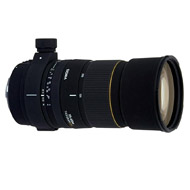 | Sigma 135-400mm f/4.5-5.6 APO DG Pros: Compact size, Light weight, (Removable) Tripod collar for tripod use; Sharpness up to 300mm, cost, general build, Apochromatic Cons: (Almost) unusable handheld, position of manual focus ring, Image quality at 400mm f5.6; no stabilisation (but that's also a weight/size advantage); Opinion: A budget Sigma long zoom that is actually quite useful, if you know its limitations and how to overcome them. At the same weight as my 70-200mm f2.8, this makes the lens very portable, meaning it will get taken out on walks a lot more than my mega heavy and huge Sigma 150-500mm, which tops 2kg. I used to own a Nikkor D (Mk1) 80-400mm and I really liked the extra 100mm, for long distance landscapes. Now with DX D7000, my excellent Tamron SP 70-300mm VC superbly handles long distance landscape work now. But that does not have a tripod collar and whilst its VC is superb, I struggle to get good night shots even with a heavy duty tripod. The 150-500mm is far better for birds and wildlife, where it is the only lens and for carrying short distances only. I took the 135-400mm on a walk for 12 hours, attached to my good Manfrotto monopod. It balanced perfectly holding just the rubber grip juts the below the head of the 'pod. That made it all seem light and portable. The 150-500mm is far too top heavy for that and the uncomfortable handle that is part of its tripod collar cuts into your hand. Handholding the 135-400mm at the long end and its lightness makes for difficult framing of the subject, let alone keeping it still for slow shutter speed shots. Even with the monopod, I still tried to keep shutter speed up to at least 1/250, due to side to side movement. AF is a bit noisy and can hunt on low contrast subjects, but that would expected. Manual focus is next to impossible when handholding, the ring is next to the tripod collar and you can't hold the lens properly at the same time. On a monopod, it is very easily done, a smooth light action. with the left thumb. Image quality: MTF figures I've seen show this lens to be similar in performance to Sigma's current offering - the 120-400mm OS (which costs a lot more and is a very weighty 1600g), except at 400mm. At this extremity, you need f8 to get good sharpness; wide open it is rather soft in both sharpness and contrast. F6.3 and f7.1 don't really magically improve on this either. But, for my intended tripod use, this stopping down is not so much of a problem, of course. However, long distances in England always have some haze, even on the brightest days and so will always appear soft. In fact, at closer distances, the lens is actually quite good even at f5.6 and 400mm. It is also worth saying that the lens is very nicely put together, it feels MUCH more robust than my 150-500mm. The large hood is a bit plasticky but effective and adds considerably to the lens' overall length. In conclusion: these 135-400mm's can be found on Ebay for 150-200 pounds sterling; I paid for 190 for an almost unused example. At this price, there must surely be no other lenses that reach 400mm, let alone one that is usable to a quality standard, as long, as I said, it is used within the confines of the lens' characteristics. It also came with a very decent Sigma case, too. Rating: Handling and everyday usability, well, not great, so just 6; image quality 8, if used sensibly; so overall 7, which might seem quite low but the modern competition has moved on considerably but I'm sure I will find it useful for what I intended and for the price paid too. sent on August 05, 2015 |
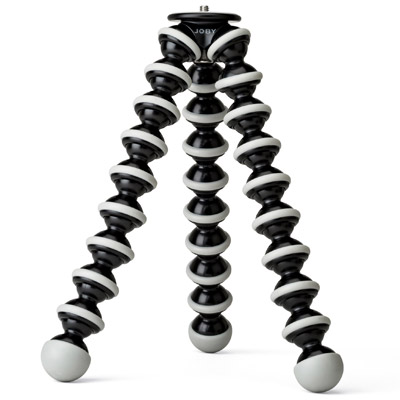 | Joby GorillaPod SLR-Zoom Pros: Lightweight; Fits in a rucksack or camera bag; fairly flexible; useful for ultra low shots; better than nothing Cons: Easy to unbalance; not suitable for cameras larger than a DX DSLR, with a small-moderate lens; no replacement for a good tripod Opinion: One of the bigger GorillaPods, its claims can seldom match reality. My model, bought two years or so ago, has a ball and socket head and a spirit level. IF the camera is level, the lens isn't too long/heavy to unbalance the whole set-up and you use Mirror Lock Up, (thus have the time to do all this setting up) then you can get good results. My D7000 + Nikkor 10-24mm, a lens of moderate size and weight, works quite well on the GPod, but my FX D700 is just too heavy for it and the legs splay out from under it. A tiny lens, such as 50mm D f1.4 or 16mm D fisheye is OK on the D700, though. Long lenses are simply a no-no, the legs just splay outwards under the front-heavy weight. As for wrapping the knobbly legs around branches and such, if the camera doesn't fall off, then your nerves are wrecked by wondering if it will fall off. However, despite my whingeing, it does work nicely, where a tripod won't, for super low positioning, which with an ultrawide angle lens can create dramatic shots, in say, river beds. The legs can feel and make creaking noises when moved, but this seems to be normal. The small spirit level isn't much use either - I use the Virtual Horizon on the camera's display, which again, adds more time needed to set up shots. The actual kit is fairly well made though and mine hasn't fallen apart, yet, so it is essentially a good piece of kit, IF used within its confined limitations. sent on July 20, 2015 |
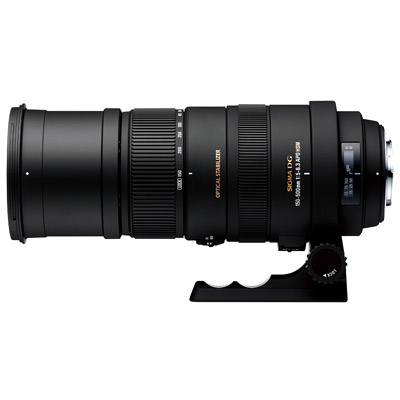 | Sigma 150-500mm f/5-6.3 DG OS HSM Pros: Price/sharpness ratio; Amazing optical stabilisation, down to 1/20 sec at 500mm (or was I just very lucky!?); supplied carry case. Cons: Unreliable and delicate; Size and weight; filter size; Uncomfortable handle that doubles up as the tripod mount; fiddly switch for the zoom lock, which can be difficult to engage. Opinion: I traded in my old Nikkor D 80-400mm VR (Mk1) for this even bigger beast - because it performed much better where it mattered most, at the long end and wide open. And because it allowed an extra 100mm reach too, of course. But of course, from the 80-400mm which you could (just) take with you as your sole long zoom, the Big Sigma is very much a specialist lens that is so big and heavy that it seldom gets used. Not that my 150-500mm likes being used, along with every owner of one that I personally know, it needs a repair or a service, or something! When it does work, then the images can be excellent, a reason why so many enthusiast photographers have become bird and wildlife photographers of excellence - this lens can really produce professional looking results. I must be about the only owner of one though who doesn't use/didn't buy it for birds or wildlife - I love the flattened and layered perspective in the landscape allowed by such a focal length, which can be a mighty 750mm equivalent on my DX D7000. I now tend to use my excellent Tamron SP 70-300mm VC with a Sigma 1.4x Apo teleconverter when out and about that gives me equivalent to 560mm on DX and of surprising quality too. As I don't have a car and have to take buses/trains and walk everywhere, the 150-500mm is just TOO big. IF I had the money (I don't) I'd snap up Nikon's replacement 80-400mm VRII, which addresses all the issues that marred the original, yet giving that so useful focal length range yet still be portable and would replace the Tamron 70-300mm, which is severely lacking in not having a tripod mount as more of my shots are now done in near darkness. One issue I had with the 150-500 was the protector filter (massive 86mm) that I bought and not cheaply either, quite severely affected image quality. Some users have said that their lenses weren't sharp and for a while mine wasn't either and when I removed the filter (permanently) it was back to its sharp former self. And, the big case that is supplied makes for a big comfortable pillow (with lens inside) for when you need to take a short sleep after carrying it around! (I am not joking, either) Yes, I should and must use my Big Sigma more! Image quality/OS 10/10, Finish and build quality 6/10, overall 8/10 sent on July 18, 2015 |
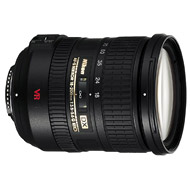 | Nikon AF-S DX 18-200mm f/3.5-5.6 G ED VR Pros: Focal length range, reasonable max speed of f5.6 at 200mm Cons: General Performance, Distortion, Handling, Manual focussing Opinion: If this Nikon superzoom is about the best available and about the only one that can deliver any sort of quality, then help the rest, ie, the independents! It does have a reasonable reputation though and if this is the only lens you have with you, for instance, when travelling, it can turn in OK results. I always need to add a sharpness mask to all images though, not because they are necessarily 'soft', but that they become more alive and look better, without looking too artificially sharp. There are no terrible stages either, you'll get something reasonable at 200mm f5.6, which would be a real challenge to all such lenses. Distortion is fairly dire at 18mm, more pronounced barrel distortion than my Nikkor 10-24mm, at 10mm!! At the other end, the pincushion distortion is obvious. I am comparing this lens (probably unfairly) with the results that I get daily with my usual combination that (more than) covers this range, both about the best available, for their price - Nikkor 16-85mm f3.5-5.6 VR & Tamron SP 70-300mm f4-5.6 VC. The sharpness and contrast difference is obvious between these two and the 18-200mm, but of course, the very idea for a superzoom is that it's one lens to carry about, and use. I don't regret buying the 18-200mm, and won't sell it - I actually use it for community event photography, as the official photographer, where getting the shot is a must and where changing/carrying other lenses is not possible. As I said, with some time and care taken in Photoshop, images can look very reasonable and as most images only end up as a thumbnail on the organiser's website, absolute sharpness is not the most important thing. Again, compared to the shorter range and better built 16-85mm VR, the 18-200 is not nice to handle, with a definite resistance at about 70-100mm when zooming, which takes your mind off the subject and shot. Polarisers are a very fair 72mm and a non rotating front helps. Focus isn't quick but does the job, but at least is very quiet. The VR is quietly effective, too. Weight and balance on my D7000 is a little front heavy, especially when zoomed all the way out. Manual focus is not nice and not easy. As far as I understand, the replacement VRII has the same optics and thus performance, but with some minor cosmetic improvements, including the upgraded VR. These old 18-200mm's are now cheap secondhand and plentiful and they can get a bit tatty. I'm not sure that I'd spend the extra on the newer model, which has a much higher price. I've never tried any of the new generation 18-300mm's, but my experiences with superzooms so far, that range is just pushing the physical and optical limits too far, but no doubt, one day I will be proven wrong. So, in the meantime, I'm carrying my usual 3 lens kit for DX (Nikkor 10-24, 16-85mm & Tamron SP 70-300mm) when and where I can, but will reach for this 18-200mm if I have to. 6.5/10 sent on July 15, 2015 |
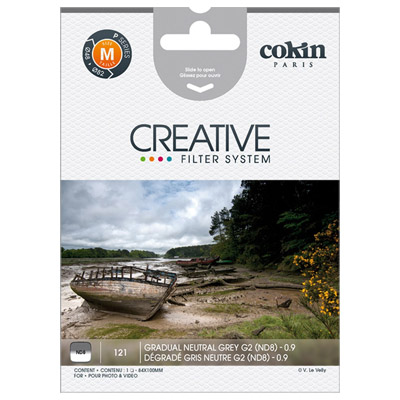 | Cokin Gradual Grey G2 ND8 (Creative, n.121) Pros: Cokin brand name, quality of the filters, cheaper than Lee filters - Amazon (UK) very good price Cons: Holder is too big and protrudes too far out, causing obscuring the image edges, resin filters cannot handle very bright sources that well, cumbersome, stupidly over-big bag to carry the kit in. Adaptors expensive Opinion: Buying the 'Z' series (Pro, 100mm large) graduated grey kit, in 1, 2 and this 3 stop filters, they are a major step up for me for serious landscape photography, since I used to use 'P' grad greys in my days of transparency film, over ten years ago, but not since. Intended for use with mainly my DX 10-24mm Nikkor and Tokina 16-50mm f2.8, both with 77mm filter thread, possibly also on my FX Nikkor 17-35mm f2.8, with my FX D700. Firstly, the filters are nice, long and are very good quality, for a resin filter. The holder isn't so nice and this is widely reported, but with anything, you have to make the best of it. The supplied carry case is far too big for what it needs to be, but you get felt pouches to put each filter in. Vignetting - you can get my 10-24mm down to 11mm before the front of the holder intrudes, which is pretty good and still a very wide angle of view (eqv to 16mm on FX, though I'm sure it would vignette at 16mm on the Nikkor FX 16-35mm). The gradation between light and dark areas is nice and smooth, which you can alter by f-stop, of course. Images have a well balanced, slightly softer (in contrast) look, which suits many landscapes. Tried it with two filters with the full moon, which was at the edge of the frame. The bright light reflected off between the filters, causing a bit of a mess. Not recommended! The moon smeared slightly, with just one filter, though. I'm still trying out the filters in different conditions. So, overall, yes, the kit is a bit of a compromise, but far better than what I had before (nothing!) but at 92 pounds sterling on Amazon for the whole kit, it is a bit of a bargain. The adaptors though, at around 20 pounds sterling each, mean that having as many lenses with the same filter thread as possible is a good thing. So, for value, at the price I paid, and for the filters themselves, 9.5/10, but the fiddly holder and general packaging, 7/10. So, have rounded this up to 9/10, as the first two criteria are more important than the third, at least with the quality of the final image. sent on July 08, 2015 |
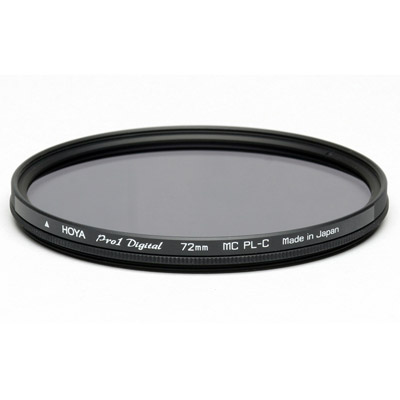 | Hoya Pro1 Circular Polarizer Pros: Sturdy, well made, good all-round polarising filters, reasonable prices, widely available, multi-coated (better contrast against the light) Cons: Not the best, but definitely far from being the worse. Opinion: In my opinion, the minimum standard polarising filter that the enthusiast landscape photographer should buy. Ordinary Hoya's are for amateur use only. They should last 2 or 3 years, if treated with care. I've largely now moved onto Sigma polarisers which are darker, (greater effect), better made (superbly smooth and won't fall apart) and slimmer too. Hoya's Pro range can be found widely discounted on line too, making them competitively priced. 9/10 sent on June 25, 2015 |
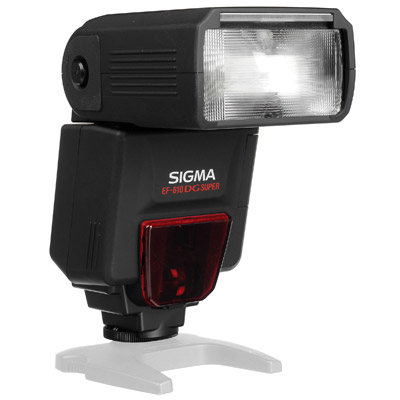 | Sigma EF-610 DG Super Pros: Power, Features, well made, value, flip up card Cons: Battery compartment flap Opinion: For basic press use. I sold my Nikon SB600, rejected the much heavier, unnecessarily more cumbersome and expensive Nikon SB 900 and bought this Sigma 'gun about four years ago. I don't use flash very often, but when I do, I need adequate power, flexibility and reliability. The gun is nicely made, except for the awful battery compartment and it is almost impossible to see the correct polarity for the four batteries, especially in the dark. It is more powerful than the SB 600 was and compared to the SB900, much simpler to use and to override. Despite being dropped once, only about 0.5 of a metre, it has survived and still looks good, so finish and construction is of a high order. So, it does well a lot of what you need, without the frills you don't. I'm sure it can do much more than I'm going to use it for, but I am not a flash user, by choice. Exposure and compatibility with D700 and D7000 have always been fine. Power consumption seems fine too but then I don't use it for 100s of photos at a time. 9/10, reduced by that fiddly battery flap. sent on June 18, 2015 |
 | Tamron SP 500 f/8.0 Model 55B Pros: Compact and lightweight, close focus Cons: Catadioptric lens, meaning fixed slow aperture and 'doughnut' shaped out of focus highlights, quite soft low contrast image, mirror alignment quite easily knocked out of place, no stabilisation, manual focus, very old Tamron 'Adaptall' system, lenshood essential Opinion: Out of all the plethora of catadioptric (mirror) lenses that came out of the 1980's, this, apart from the much heavier and more exclusive (now) Nikkor variant, this Tamron is about the only one even worth considering, now. With the likes of excellent quality (in comparison) long zooms such as Sigma 150-500mm almost commonplace and affordable, the need for a cheap very much compromising mirror lens is almost not there now. I bought mine back in the film days for my F100 and it's always been difficult to get a sharp image. The subject jumps about in the viewfinder that sometimes it's difficult to frame it accurately! However, it seems surprisingly much more able on the digital crop D7000, accessible via Nikon's 'non CPU lens' data bank. I occasionally use it for very far distant views, where infinity focus usually means no out of focus areas to create those awful doughnut shapes. The resulting image quality is always quite low contrast, not surprising considering how many times the light path is bent by all those internal mirrors. The images always requires quite a lot of Photoshop sharpening and extra contrast. I can achieve better results by attaching Sigma EX 1.4x TC to my excellent Tamron SP 70-300mm VC, giving equivalent to 560mm, compared to 750mm of the mirror lens. The vibration control of the zoom actually works too. I do stop the zoom down a bit though, but even handheld in good light, results can be impressive. Therefore, I almost never use this 500mm f8 mirror lens these days but I will keep it, as its value is probably quite low now and it may become useful again. The lens, being an 'SP' Tamron is well built though, with a nice smooth but long reaching focus ring that focusses down to 1/3 life size. In conclusion: in these days of ultra fast iso's available and excellent long zooms covering this focal length, mirror lenses are really only of novelty value, now. But, if you want to try one, or are after those weird out of focus shapes, then this is probably about the only reasonable contender and the Adaptall system should fit most DSLR's, as long as you can get the relevant adaptor, of course, which will be secondhand too and cost you extra. Overall, I can't give this lens more than 7/10, when compared to what is available today. sent on June 17, 2015 |
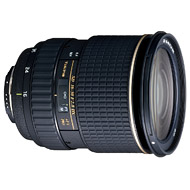 | Tokina AT-X Pro 16-50mm f/2.8 DX Pros: The only true DX equivalent to a 24-70mm f2.8, build, solidity, weight when compared with Nikon, Price, Sharpness, constant aperture, decent lenshood, smooth zoom/focus, Made in Japan, 'Standard' 77mm filters Cons: Discontinued, scarcity in Nikon fit, old style AF, Zoom creep, CA against the light at f2.8 Opinion: Upgrading from my little and plasticky Tamron SP 17-50mm f2.8, this Tokina offers no cutting edge technology. Big, chunky and with 77mm filters, it is noticeably bigger and more 'pro' looking than the little Tamron. But still 150g lighter than the Nikkor 17-55m f2.8 that I aspired to, but cannot afford! Handles and balances well on the D7000. Tokina discontinued this lens a while ago and finding good Nikon examples can be difficult, finally found this good value example at 249 English pounds sterling, which was one hundred pounds less than other examples I'd seen, in Canon fit. My example suffers from quite bad zoom creep that affects shooting at long end and at angle steeper than 45 degrees. I don't know if this inherent in its design or just mine. Performance is excellent, at least from f4 down; at f2.8, it's like any similar lens, very usable, but only when you need that aperture, due to low light or for shallow depth of field. Corners at 16mm f2.8 are a bit soft, but not so noticeable and we are talking about a wider angle of view, after all. F16 is about the minimum usable aperture, it gets soft all over beyond that. AF is engaged by pulling the lens barrel back, hardly modern technology or that quick but the AF, despite being old technology only makes a noise if it travels through a large portion of the focus scale. In normal use, where it is picking up small changes, it is quick, quiet and accurate. Tokina state that the front element has a special coating which allows easy cleaning, but haven't tested this yet. Barrel distortion is slightly high at 16mm, (but still less than my Nikkor 18-200mm, at 18mm) but again, not so surprising considering the angle of view and it's not bad enough to be visible in the viewfinder, and is easily correctable, of course. Slight pincushion at 50mm, which again, is par for the course. Tried lens wide open in dark church for stained glass windows; CA's not noticeable, only when viewed very large on computer. So, overall, a very valid and usable pro quality lens for landscape, street and live music shooting until the time I can afford a Big Boy Nikkor 17-55mm f2.8. For value, quality, build and usability, 10 out of ten, but I have to knock a point off for that zoom creep and for the old style AF, so overall 9/10 sent on June 08, 2015 |
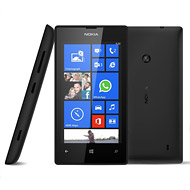 | Nokia Lumia 520 Pros: Cheap, at least compared to some of the competition! Colourful back covers (mine's red) Cons: Frail, had to be repaired after six months (not accidental damage) Opinion: My first ever smartphone but would never ever use it as a camera. Why would you even want to?? No idea how to turn that facility on, let alone can share images taken with it! Not a good smartphone and will want to upgrade when contract ends but attractive deal for first time user of one. It does the job, which is something, I suppose. Hello Hello Hello sent on May 31, 2015 |
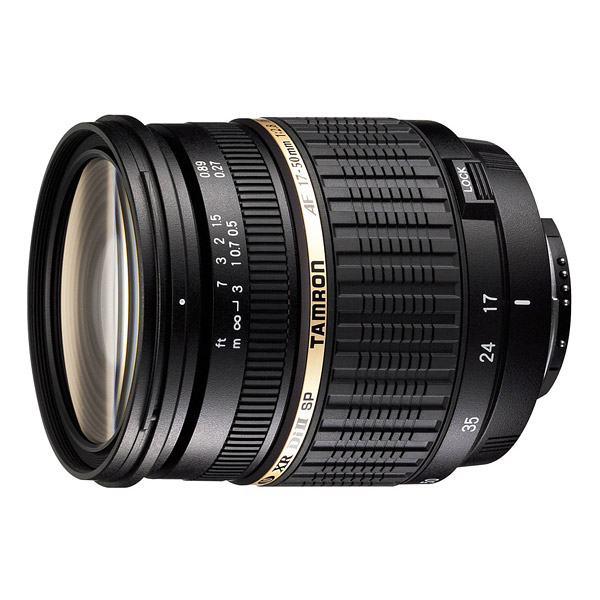 | Tamron SP 17-50mm f/2.8 XR Di II LD Pros: Unbelievable value for money, Sharpness and contrast, f32 minimum aperture, relatively small 67mm filters, quite close focus Cons: Jerky zoom action, plasticky, general handling, AF, lightness (possibly) Opinion: I wasn't going to write a review as there are already so many written. Firstly, I don't much like this lens, in use, but I DO like very much its image quality and I was almost forced into buying it, needing a very cheap fast standard zoom for low-light music and performance photography for my D7000. It needed to be not obviously soft at edges at f2.8 (Sigma 17-50mm f2.8 is) and be able to perform well wide open at all focal lengths. From f4 to f11, the sharpness is the equal to any zoom I've used (inc pro Nikkors) and is very satisfying for landscapes in low light. I also use a Nikkor 16-85mm VR for landscapes which also has great image quality in a well built unit that's nice to use and with VR also. But it's obviously not great in low light and when zoomed out. However, after nearly two years with the Tamron and some beautiful sharp images that rank among my best, I keep looking at reviews of other lenses. . My big hands yearn for a lens more substantial than the 400g Tamron and the sticky zoom irritates me often. Having to disconnect AF on both lens AND camera to override the AF is a pain too. The benchmark Nikkor 17-55mm was designed over a decade ago and its weight and build is just too much for practicality and while used prices have dropped hugely now, it is still too expensive for me and there are some real rogue ex-pro battered examples out there. The Sigma, as I said is an attractive proposition, weight, size, OS and price but whilst apparently being optically excellent from f4, on, it's still variable at wide open. The better built newer, with VC, Tamron seems to have suffered an overall loss in absolute quality - Tamron still offer the older lens under review in their current line-up, so even they acknowledge that the quality is better here than the newer one. I'm now considering the used only Tokina 16-50mm f2.8. Substantial and well made but not quite up to the over-the-top Nikkor and at a reasonable price for a good one. Tests I've seen show a reduced edge resolution at f2.8, which is to be expected but unlike those Sigma's, not a soft edge. And mid aperture it looks to be on par with anything else. So, my review is really for the whole fast standard zoom genre and how small the actual choice is, when it would seem to offer many. Score, for this Tamron, Price and image quality;10, handling; 6, overall 8 sent on May 30, 2015 |
 | Nikon Ai-S 50mm f/1.8 Mark III Pros: Tiny 'pancake' lens, Sharpness from f2.8 on, superb all metal build Cons: Close focussing poor, MF (possibly) Opinion: Not a novelty, this stunted tiny all metal lens is otherwise a Nikkor standard 50mm lens. And in attractive silver too. I used it on my Nikon FE2. And being Nikon, I can still use it on my D700 and D7000, using the 'Non CPU' settings. And I have done, recently - see the shot of the door handle. Beautifully made, with smooth manual focus. Optically, it's like other Nikon 50mm f1.8's, fair but usable wide open and really getting sharp and crisp by f2.8. A downside though is the 0.6m close focus, which limits creative use but is OK otherwise and this is due to lack of barrel length for the mechanism to physically extend. Being the owner of a 50mm D f1.4 these days, this little lens doesn't get used, but is too nice to sell! 9/10 sent on May 24, 2015 |
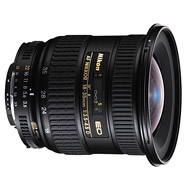 | Nikon AF 18-35mm f/3.5-4.5 D IF ED Pros: Very Snappy sharp and contrasty images, price secondhand now, Sensible filter size Cons: Bad barrel distortion, slow aperture at 35mm Opinion: Had this on my Nikon F100, eventually trading it in for possibly the ideal ultrawideangle Nikon zoom, Nikkor D 17-35mm f2.8, which I still use. Very decent images on the 18-35mm, especially with a polariser (sensibly sized filter). Having always been used to a fast 35mm focal length, I soon found the f4.5 maximum at this setting wearisome. I was also always annoyed at just how much barrel distortion there was at wider settings, with sea horizons placed near the top (I did a lot seascapes!) bending rather too much. If I didn't have my 17-35mm f2.8 now, I might consider the new 'G' update of this 18-35mm spec, presuming that Nikon have redesigned and ironed out the faults (and added AF for all models) in this original and as the 16-35mm f4 is an expensive beast indeed. But if on a budget and a good, but not brilliant, FX ultrawide zoom is what you need, then a good used example could be a good move. 8/10 sent on May 24, 2015 |
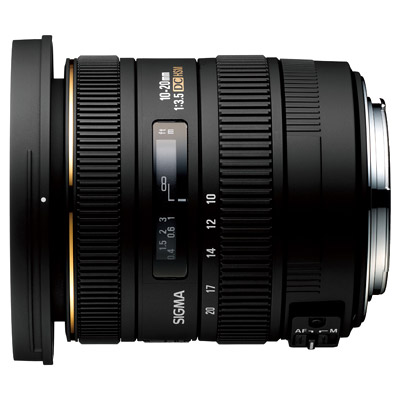 | Sigma 10-20mm f/3.5 EX DC HSM Pros: Constant f3.5 aperture Cons: Duff sample, so went for Nikkor 10-24mm Opinion: After reading some glowing reports on this lens, I wanted to add my unfortunate experience. The constant f3.5 aperture and 10mm, versus the 11mm of the Tokina 11-16mm, so I ordered the lens (approved UK stock) with approved finance with a particular retailer. Firstly, I found the lens less well finished than other EX Sigma's but then on trying, it just wasn't sharp at any aperture, or focal length, or at focussing point. The fringing around tree twigs in the sky rendered them awfully too. Definitely a dud. The supplier then checked the potential replacement (at my request) and they found that to be faulty too, but in a different way. They checked ALL their stock and found they couldn't sell any of them. In the end, it was resolved by them price-matching the Nikkor 10-24mm with cheapest UK stock and the rest is history. The Nikkor is excellent, usable at all apertures, except f22 and extends slightly further to 24mm. There are never issues with image quality with these Nikkor's. Sigma failed on this one, big time. You may well be much luckier and Sigma may well have got their act together now, but my experience will always taint me with reluctance when buying Sigma again. sent on May 04, 2015 |
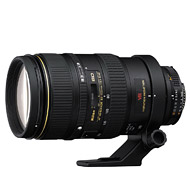 | Nikon AF 80-400mm f/4.5-5.6 D ED VR Pros: Focal length range, solid construction, tripod collar Cons: Rudimentary VR, that takes long time to kick in and does so visibly, Weight, f22 performance, 400mm open aperture performance, closest focus, repairs expensive and slow, old type AF Opinion: Initially purchased to turn my FX D700 more into a DX, extending maximum focal length from 300mm to 400mm. The combination of the 1kg of the D700 and this lens made for a home gymnasium! Good image quality generally but noticeable fall-off at 400mm, especially at f5.6. Highly usable long lens for many applications but some very restricting downsides. Closest focus of 2.3m isn't close enough for a head and shoulders portrait, for instance and the original VR was very agricultural, with noticeable delay and a visible movement in the viewfinder. F22 performance very soft (tripod mounted for a landscape with maximum depth of field) The lens, with generous lenshood becomes very long at 400mm too, making it very obvious. I then dropped the lens and, via the shop who sold it, Nikon took over 4 months to repair it as a part could not be sourced. On repair, I immediately traded it in for Sigma's 150-500mm, even bigger and far less well built, but better optically. I had also bought a DX D7000 by then too and so I had the 400mm focal length with my much more portable Tamron SP 70-300mm VC, which I still use for almost all telephoto applications. The new, replacement G 80-400mm seems to have addressed all the issues, such as 400mm performance and now has SWM and latest VR, BUT at a huge hike in price. BUT, if I had the money, then I would definitely buy the G as it offers a really useful extra length over the 70-300, especially on DX, but without the huge non portability of the 150-500mm, plus of course, a wider starting point. sent on May 01, 2015 |
 | Nikon 28mm f/2.8 AI Pros: Size and weight, build, sublime smooth manual focus, image quality from f4, Cheaper than the legendary Al-s, compatibility with higher end Nikon DSLRs Cons: It's NOT the legendary Al-s!, Metering etc difficulties with lower end Nikon DSLRs Opinion: Despite me owning two quality FF zooms that cover 28mm at f2.8, they are huge and heavy and not at all suitable for street photography use, especially on a full-frame that they were designed to be used on. I wanted latest Nikkor G 28mm f1.8, but they're about 400 pounds sterling mint secondhand. Saw this old Nikkor on Ebay for 85 pounds sterling, which was all I could afford. I probably should have waited for a f2 version to come up, which is more of what I wanted but would obviously have been more expensive. My f2.8 doesn't focus as close the Al-s, (which was Nikon's flagship 28mm prime for years and years, at a time when this was many photographers second lens), but unlike my AF fast 28mm zooms, the gearing is long, so accuracy is excellent. I use a collapsible rubber lenshood (tiny 52mm filter thread, vs 82mm of my 24-70) that's normally on my 50mm f1.4 and there's no vignetting when in use. Image quality: all those advances in lens technology over the 20-30 years since that allow modern zooms, such aspherical, special glass and computer aided design, mean that this fixed 28mm is almost exactly the same sharpness and contrast, aperture for aperture, as a top zoom. Therefore, wide open, it's good centre with drop toward the corners, usable, if you need to use in low light or minimal depth of field, at f4, snappier contrast and sharper throughout and by mid apertures, able to compete with anything else out there. From reviews and my own feelings, I'd much rather have this lens than the plastic 'D' AF that replaced it and which has a much more basic 5 element optical design and so isn't as good image wise. The lens also works well as a 42mm f2.8 on my DX D7000, giving a much more natural angle of view than a standard 50mm does, which is a bit narrow. My score 8/10 sent on April 29, 2015 |
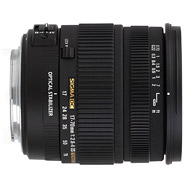 | Sigma 17-70mm f/2.8-4 DC OS HSM Macro Pros: Good focal range, build, Speed, Close focus Cons: Little soft at f2.8, Manual Focussing Opinion: Apparently, the new replacement for this lens is much better and would be the obvious choice. I liked this older lens, when I had it, which naturally married up with my 70-300mm nicely. However, for landscape and general use, I find Nikkor 16-85mm VR, which I replaced it with more versatile and better image quality and for low-light live music the little Tamron 17-50mm f2.8 has the necessary quality at f2.8 that this Sigma didn't, especially at the edges. So, for me and my needs, the 17-70mm too much of a compromise. For many though, it would be ideal, well weighted, well built and with HSM and stabilisation. Main gripe was the rotating lens barrel which startled during AF. Conclusion - one of Sigma's winners, useful and cost effective package though if buying new, the replacement would be the one to go for. Overall score 8/10 sent on April 19, 2015 |
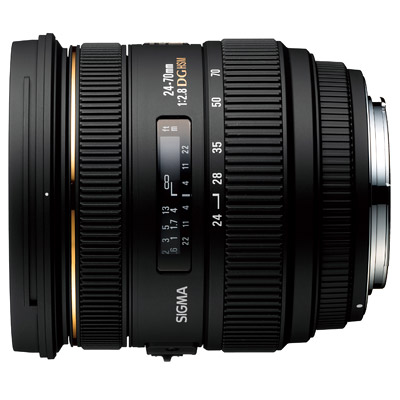 | Sigma 24-70mm f/2.8 EX DG HSM Pros: Superb build and handling; snappy and contrasty image; HSM focussing; value compared to Nikon; quality lenshood Cons: Not brilliant at 2.8; 82mm filters; heavy, especially when on FX body Opinion: The nicest handling lens I've ever used. Rock-solid build with silky smooth zoom and manual focus. AF an absolute pleasure. Performance is OK at open aperture but just closing down to f3.2 makes for noticeable improvement. f4 - f16 and images are super-sharp with lovely 3D roundness and buoyancy, popping from the PC screen. Polarisers hindered by large 82mm size, no vignetting at 24mm. I also use this lens on DX D7000 for 36-105mm f2.8 with theatre and performance photography. If buying now, the Tamron with VC would be the obvious choice, my Sigma is 5+ years old and still looks good and performs and handles as well as new. My score 9.5/10, rounded down to 9/10 for Juza. sent on November 04, 2014 |
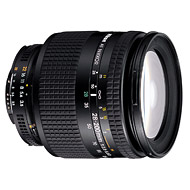 | Nikon AF 28-200mm f/3.5-5.6 D Pros: Useful focal length range; contrasty at all settings; good sharpness at almost all settings; cheap to buy used; 62mm filters Cons: Closest focus a joke and unusable; bad barrel distortion at 28mm, pincushion at 200mm; totally inadequate lenshood, barrel rotates during focusing. Opinion: Good travel lens but won't focus close enough for head and shoulders portraits! Not suitable for architecture due to pronounced distortion, especially barrel at 28mm. But excellent colour rendering, sharp and contrasty, with a real punch. But flare resistance can be poor, circular lenshood poor at both ends of focal range. A much better lens performance wise than the Sigma and Tamron equivalents but for everyday use, limiting and so I traded it in whilst it still had some value. Best avoided, overall. My score 6/10 sent on November 04, 2014 |
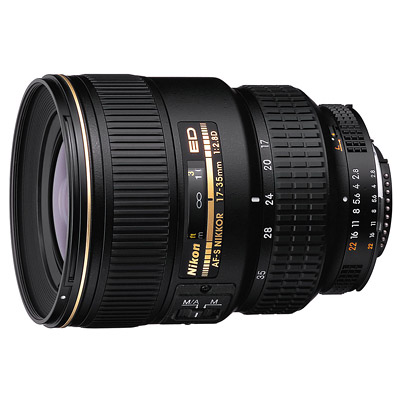 | Nikon AF-S 17-35mm f/2.8 D ED Pros: Constant f2.8 maximum aperture; sharpness and performance from f4; solid all-metal build; Useful set of wideangle focal lengths; 77mm filters; silent-wave focussing; Keeps its value Cons: Expensive; many abused examples secondhand; Replaced by Nikkor G 16-35mm f4 VR Opinion: My very old example was bought secondhand ten years ago! I traded in my Nikkor D 18-35mm f3.5-4.5 for it. The difference between the two were huge and vast. Used then with F100 film body and now D700 and occasionally DX D7000. Had to be repaired and serviced by Nikon when the zoom became stiff then jammed totally two years ago. Zoom and focus now both silky smooth. Performance at f2.8 isn't brilliant but by f4 is one of the sharpest lenses ever made, across almost all the frame. I use it at f4 for night-time and astronomical shots. Super sharp and contrasty down to f18, f22 not so good, but OK. In tests, better than Nikkor D 20mm f2.8 aperture for aperture. Barrel distortion at 17mm is quite noticeable but is not wavy-line and is easily straightened in Photoshop. Polariser at 17mm makes for great landscape photos but a slimline thin model required to stop vignetting at below 20mm. Lenshood needed at all times. Flare resistance good but not immune, the front element surface element is quite large and not very recessed. Recommended for serious pro use and tripod work on full-frame and if you can get a good, nice used example. My score 9/10 I also use this lens on tripod set to f8 on FX D700 to record a large public art gallery's every exhibition. It looks the 'business' as well as able to resolve the finest detail. I also get paid a modest sum to continually do this! sent on November 04, 2014 |
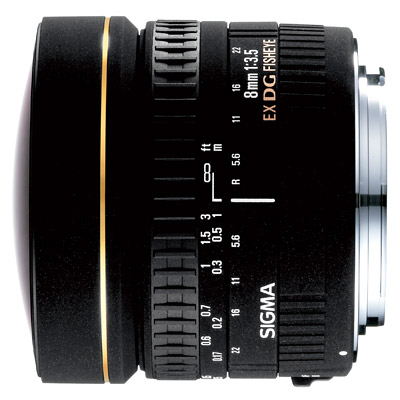 | Sigma 8mm f/3.5 EX DG Circular Fisheye Pros: Unique spec for Nikon Full-frame, Build, Resistance to flare, smooth focus Cons: Cost, rarity used, difficult to use, extremely vulnerable front element that requires replacing the lens cap after every picture has been taken. Opinion: For Nikon Full frame DSLR's there is no other lens that gives an 180 degree true circular fisheye image. Nikon don't make one, nor do Korean manufacturers such as Samyang. This Sigma is superbly engineered and finished, with superb focus action. It's also AF but that's hardly worth using, considering the staggering depth of field. Far too expensive new, get a good used example, though these are rare and will still cost a lot. My mint used one from a reputable store was still 399 pounds. Finding subjects is very difficult, you need interest in both top and bottom of the circle, which is best for interiors. You cannot crop a circle afterwards, so you have to compose the image very carefully. You will almost always get a part of you in the picture too - feet, clothing, arms. Quality: Impossible to compare as there are no alternatives! Wide open isn't a good idea but f5.6 and beyond is very good in the centre, but the "edges" always are behind. But the detail recedes so quickly away from the centre that detail gets very small anyhow. F8 is a good aperture though when handholding in low light, this can be tricky. Tripods are almost impossible to use - the legs intrude into the picture area, unless looking up. You can handhold down to 1/8 sec no problem, if you're steady. Exposure is tricky - mine always wants to overexpose. Switching from Matrix metering to Centre-weighted helps a great deal. This must be due to the extreme picture area and the vast range of tones that the lens and meter sensor sees. Sigma also make a 4.5mm circular equivalent for DX bodies. Definitely not a lens for everyone and one difficult to justify owning but is excellent for creative use when the subject allows for it. My score 8/10 sent on September 27, 2014 |
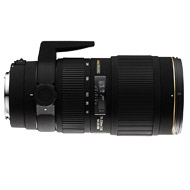 | Sigma 70-200mm f/2.8 EX DG HSM Macro II Pros: Build; Mechanical quality; close-focus ability; affordability when compared to the competition; solid removable tripod collar. HSM focussing. Image quality from f3.2 Cons: Soft at f2.8, especially at 200mm, but by f3.2 improves dramatically. Opinion: Originally bought 5 years ago for performance and music photography for my Nikon D700. Lovely lens to use, the fluidity of both zoom and focus perfect. You can focus manually with your thumb whilst zooming at same time! Yet is never loose. After 4 year's usage, only the rubber grips have discoloured slightly and that's the only sign of wear. Rather than true macro, the 1:3 ratio close focussing gets some wonderful wide aperture focus effects on close ups, especially against the light - and from a good distance too. Performance - well, it's not a Nikon, at 3 times the price but apart from not being that great at f2.8 at 200mm, even stopping down to f3.2 really pulls the quality in. At f4-f8 then it is punchy and very sharp, though you will get flare and ghosting when the sun shines directly down the lens barrel. The excellent lenshood helps. If you were buying such a lens new now then optical stabilisation would be a priority, but that later model is obviously more expensive. As it is, I've been able to get down to 1/50 sec at 200mm, which isn't that amazing these days with VR and OS but the beautiful and well balanced handling certainly helps get blur-free shots. I do own Sigma's EX 1.4 teleconverter, which is matched, so shows the amended aperture data etc. But I have not have used this TC very much with this lens, after initial results were a bit disappointing. As a matter of note, I tend to use a Nikkor G 85mm f1.8 for much music and low light shots now instead, as the Sigma is big and a bit slow for very dark and small venues. sent on August 23, 2014 |
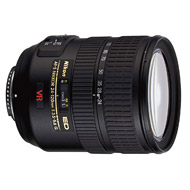 | Nikon AF-S 24-120mm f/3.5-5.6 G IF VR Pros: Focal length range; Very cheap now used; VR; Image quality f5.6 and smaller better than is often reported. Cons: Image quality at f3.5; poor reputation; Opinion: For FX use, a very usable set of focal lengths, less so on DX, where it becomes 36-180mm. Image quality will never be approaching that of a short-range f2.8 zoom, so for ultimate detailed landscapes, not the best choice. But for general use and a cheap 'all-in-one' lens for full-frame, it still has a lot going for it. Stop it down to f5.6 and image is very usable, aided by the effective VR. AF isn't too bad either but not as fast as more modern designs. Lens had now been largely overshadowed by the newer and much more expensive constant f4 version - which new, can be four times as much in cost as good secondhand example of this lens. I now use the same range of focal lengths with Nikon's DX equivalent, the excellent 16-85mm VR, which does at least have very good to excellent image quality, from wide open aperture and also has an excellent reputation, borne out by its popularity with contributors to Juza. So, for those who are FX users and cannot stretch to the new f4 version, or a 24-70mm f2.8, then there is still some attraction in this old f3.5-5.6 model. Just do not buy new - it was an expensive lens new, for what it offered. Build quality is not that special either so can get tatty with heavy use. Another contender in this market must be Sigma's new 24-105mm f4. My score 7/10 sent on August 19, 2014 |
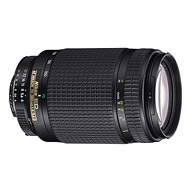 | Nikon AF 70-300mm f/4-5.6 ED D Pros: Discontinued, cheap now on Ebay, very good image quality up to 200mm, light and compact Cons: No VR; AF old, noisy and slow; lens unravels down to maximum length under its own weight - very annoying; manual focus tricky especially towards infinity; not the best built Opinion: I have had one of these old Nikons for a long time, but almost always use Tamron SP 70-300mm VC now, which is superior in every aspect. I keep this Nikon as a back-up, or spare, should the Tamron need repair or gets broken. However, the Tamron is 50% bigger and a lot heavier. There are times, such as for tripod work, where Tamron's VC and USM AF aren't of any benefit and so this Nikon provides about the same quality, up to about 200mm, though 300mm is fine if you stop down, which you would using a tripod. Wide open at 300mm is OK, not soft but not as sharp as the Tamron SP either. The ED Extra Dispersion element probably helps too. It saves weight if I'm carrying lots of other gear and a tripod and if I drop this Nikon, then it's of little consequence. The lens hood is a bit of a joke and construction is quite poor for Nikon - some say it's actually built under licence! But if you only have 100Euros or so for such a tele-zoom lens and can make the most of its shortcomings, then it stands up against a new budget lens from independent makers. However, AF won't be possible with budget DSLRs as there is no internal AF motor. And close focus isn't that close, so forget macro, though you can add an extension tube to get closer. sent on August 18, 2014 |
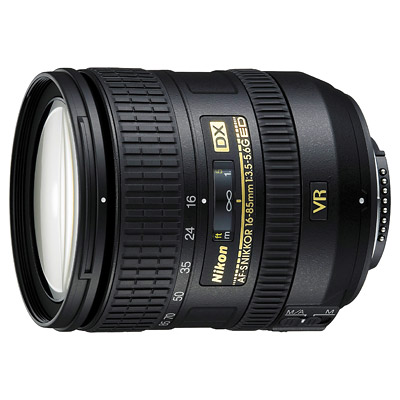 | Nikon AF-S DX 16-85mm f/3.5-5.6 G ED VR Pros: Very usable focal range, well-made, handles well, effective VR, good level of sharpness Cons: Bit expensive Opinion: I had used Nikkor 24-120mm's, the old D series and later 'G' f3.5-5.6 VR, on film and then FX D700. I was always at home with this focal range, but both these lenses had to be stopped down to get any decent results and reviews were always quite poor. This 16-85mm, for my DX D7000, is about same range and noticeably wider than say, 18-200mm and even a 17-50mm. But quality is always good, you can use with confidence and the lens just feels nice and right balance on this camera. Build quality is better than most consumer grade Nikons and inspires confidence, with no zoom creep. Distortion is not too bad either (a lot less than Nikon 18-200mm) and easily correctible. VR is effective and AF good enough too. Filters are 67mm, so polarisers not too big and expensive. For daylight travelling, I team this up with Nikkor 10-24mm and Tamron SP 70-300mm. For low-light I pack a Tamron SP 17-50mm f2.8 instead. Overall: Seriously good image quality and decent build and almost perfect zoom width/versus handling and image quality. A bit expensive and secondhand still at premium prices. If only the equivalent 24-120mm of same speed was of the same standard. sent on July 03, 2014 |
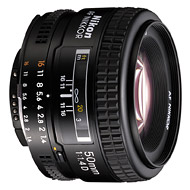 | Nikon AF 50mm f/1.4 D Pros: Fast, Tiny, Usability on both FX and DX, bokeh, price, sharpness Cons: Old style AF, lots of plastic, possibly lack of f22, lenshood not supplied Opinion: For the price used you cannot get a better f1.4 Nikkor lens. The newer 'G' series no doubt better mechanically but is bigger and more expensive. Good to use manual focus, just as well as old screw-drive AF is slow and a little noisy. A bit soft at maximum aperture, though this makes good for flattering portraits. Excellent bokeh with such subjects. From f2.8 the lens is bitingly sharp with excellent contrast. The tiny size and weight allows you to put it in a pocket, so you can always have a fast lens with you. The lens also works well with an extension tube-s, allowing extreme macro, but only for subjects you can get close to. I bought a collapsible rubber Hama lenshood for 10 pounds sterling from Amazon which works well and really can help with ghosting and flare as the largish front element does catch stray light easily. Overall: A good investment as always useful and nothing to go wrong and guaranteed compatibility with all Nikon DSLRs. My score 8/10 sent on July 03, 2014 |
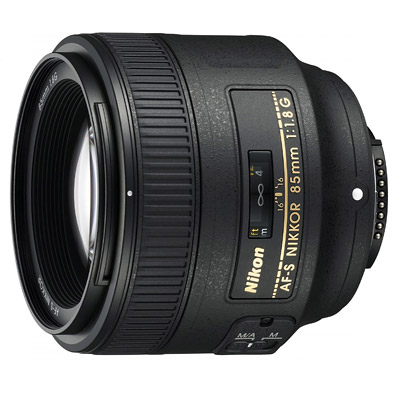 | Nikon AF-S 85mm f/1.8 G Pros: Sharpness, open aperture performance, silent wave AF, build, handling, lenshood, reasonable price - for its spec and performance Cons: 67mm filters, f16 minimum aperture, poor closest focus of 80cm Opinion: Excellent for live music performances and theatre, both in bad light but where freezing action is necessary. Portraits, too, obviously. Bokeh is very good, best I've used myself. Handling is excellent on D7000, usable one handed, if needed. All plastics very high grade, making light but robust. SWM very fast and accurate. 67mm filters larger than the 62mm D lens that it supersedes. f16 min aperture only an issue in landscape work where DOF is needed, but not really a problem for its normal intended usage. Used recently at a winter wedding for candid shots in quite dark church and then at an even darker reception! Was shooting at 1/80 f1.8 iso 3200 and when I managed to get the manually focussed shots in perfect focus, the results were quite amazing. The professionals were using Canon 85mm L f1.2's and they were very impressed by the open aperture performance of this little Nikon - they were stopping their L f1.2's down to f2 as routine. One of the best lens purchases I've ever made. My score 10/10 sent on June 14, 2014 |
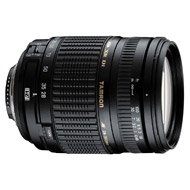 | Tamron 28-300mm f/3.5-6.3 Di VC LD Pros: Zoom Range Cons: Image Quality, Build Quality, Construction, Stabilisation, Speed, Almost Everything! Opinion: Awful lens, big mistake. Sold on again as soon as I could. Image quality not up to scratch at any focal length or aperture. The VC was so noisy that you couldn't use it as it must be faulty and would disturb people's conversation. Build awful, plastics used very cheap and as zoomed out, the whole lens got sloppy and would move about. Lenshood totally inadequate, lens horribly susceptible to flare. Avoid at all costs! 1/10 sent on May 25, 2014 |
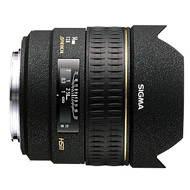 | Sigma 14mm f/2.8 EX Aspherical HSM Pros: Build quality, performance when stopped down, decent lens cap, HSM A/F Cons: Discontinued, Front element very vulnerable, prone to flare and blobs Opinion: This old discontinued Sigma is now overshadowed by the new and widely available Samyang, which is supposed to be excellent quality. I had one of these Sigma 14mm superwide's back in my 35mm film days, 10 years ago. Then, there was nothing of reasonable cost to even compare with its huge angle of view. My first, bought new, was of excellent sharpness, from wide open and had very impressive, fully correctable distortion. That lens got damaged and replaced with a secondhand one. This had worse distortion characteristics and had to be stopped down to f4.5 before it was good sharpness. I still use this lens now on full frame FX D700. A heavy and bulky lens, the huge, goldfish bowl front element and tiny lenshood make it very prone to flare and ghosting and no filters can be added. At usual mid apertures, f5.6 - f11, for landscapes, detail and sharpness is excellent from edge to edge. The HSM A/F is fast and quiet. Recommended? A while back, the only real competition for full frame was the Nikkor 14mm f2.8, but that's more than 3 or 4 times the price. Professionals will go for the superlative Nikkor 14-24mm, which sets new standards for a lens of this type. But if I was buying now, considering that my current version of this lens is of lesser quality, then I'd try the Samyang. My score, which includes value and build 8/10 sent on May 09, 2014 |
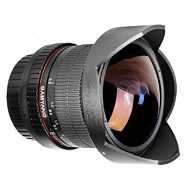 | Samyang 8mm f/3.5 UMC Fish-eye CS II Pros: Price, price, price!! Sharpness Cons: Large bulbous front, some plasticky parts (hood and cap), manual focus Opinion: I desperately needed full-frame fisheye for my D7000, but which would compare performance wise with the Nikkor 16mm f2.8 I use for my almost deceased D700. Secondhand Sigma 10mm and Nikkor 10.5mm were constantly in my Ebay saved search but they still too expensive, for my present financial circumstances. I use full frame fisheye more than is good for me, for music and street capture too, where AF is useful and what I was used to. For architecture and tripod work, MF is fine. At first I was not happy having only f3.5 and not f2.8. The level of detail at f5 and beyond is pinsharp and extraordinary, even at f4 it is good. I was blown away by the quality of a lens one-third cost of the Nikon. Flare resistance is also very good but not quite up to the extraordinary level of the Nikkor 16mm. The Nikkor 16mm was also such a small lens, size of a 50mm f1.4, so that it could be popped into a pocket and carried 'just in case'. The bigger front element of the Samyang means that it's a pouch or lens case, but that is a small price to pay for the lens' sheer usability at the price. I really thought it was going to be a compromise that I'd have to put up with until I could afford something better, now I probably won't bother! sent on May 08, 2014 |
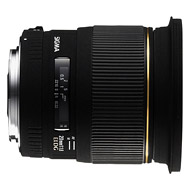 | Sigma 20mm f/1.8 EX DG Pros: Unique spec, closest focus, fastest in class Cons: 82mm filters, odd push-pull AF/MF selector, old style focus, Expensive - for its quality. Overshadowed by new Nikkor G 20mm f1.8 Opinion: This lens has two separate uses for me: Street capture - use at f2 and take off the hip. Great for wideangle industrial documentary style shots. The lens is sharp in the centre at f2, the edges much less so, which is often OK for this style of shooting. Landscapes - stop down to f4 and beyond and then it's as sharp as the competition and performs much more evenly across the frame. Distortion is low. Big 82mm filters make polarisers expensive. Handling and balance on the camera is good though the odd push/pull MF/AF selector is a nuisance. The lens also uses old Sigma AF technology, screw-driven and not HSM, but in the field for street stuff, it works OK on my D700 and D7000. The close focus might seem a gimmick but a really useful one - see my snowdrops entry. Recommended? Probably not - and only then for FX full-frame; it is expensive and quite big - Nikon's 20mm D f2.8 is pocket-sized and uses only 62mm filters. However, its unique spec is certainly intriguing and the performance isn't always the disaster it might be made out to be, if used within its limitations. Those with the money will have to sacrifice slight angle of view and splash out for the Nikkor G 24mm f1.4, to get the best quality. And now, (edit) the brand new Nikkor G 20mm f1.8 which has obviously copied the this Sigma's specification. My score 8/10 sent on May 08, 2014 |
 | Nikon 135mm f/2 Ai Pros: Fastest in class, optics, metal construction Cons: Very heavy manual focus, very weighty, In built lenshood, rarity Opinion: Very rare lens from Nikon that has been superceded and replaced by the much more expensive Nikkor 135mm f2 DC, which has de-focus control. Mine is from Ebay and is very old and battered! Whilst probably fine on a tripod in the studio, it is a swine to use in the street, namely the very long and very heavy manual focus, plus the sheer 860g bulk. Get it into focus though and you have great bokeh and a credible and usable wide open performance, which you will probably want to sharpen slightly in editing, as I have done in all the images here on Juza. The lenshood is built-in and only moves out a short way, making it not effective enough. The lens only stops down to f16. Recommended? Probably not - if you can find one at a reasonable price you then have to have carry it about and wrestle with that heavy focus. But for a lens that equates to 202mm f2 on a DX cropped camera, then nothing can really come near, for the price. sent on May 08, 2014 |
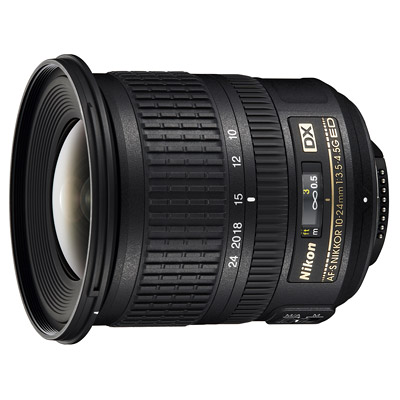 | Nikon AF-S DX 10-24mm f/3.5-4.5 G ED Pros: Covers all 'straight' wideangle applications, sharpness, 77mm filters, resistance to flare, fair distortion that is easy to correct. Cons: Consumer grade plastics and build, price - possibly. Opinion: Covers all lenses between (35mm eqv) of 15mm to 36mm, with reasonable distortion: 3.1% barrel at 10mm, easily correctable and no wavy 'moustache' type, so is suitable for architecture. Sharpness commendable wide open and excellent between f5 and f11. Very soft at f22, though. Great to use polarisers with, for the landscaper, easy to standardise with 77mm filters. Initially purchased Sigma 10-20mm f3.5 but that was a dud, so was the shop's entire stock, so that put me off and am very glad I went for the Nikon and have used it as my most used lens for past 18 months. No real signs of wear, yet. Build quality is a bit better than the average consumer Nikon zoom but not up to pro models. Great to use in the field and is reassuring to handle. For the night-time shots I do so much, more speed and brightness would be welcomed but it is used most at 10mm, anyway, so not always a real problem. If you are Nikon and want the best option for the currently widest non-fisheye lens for cropped DX, that can accept front filters - only the Sigma 8-16mm is wider, then this is it. My score 9/10 sent on May 05, 2014 |
 JuzaPhoto contains affiliate links from Amazon and Ebay and JuzaPhoto earn a commission in case of purchase through affiliate links.
JuzaPhoto contains affiliate links from Amazon and Ebay and JuzaPhoto earn a commission in case of purchase through affiliate links.May Beauty Be Everywhere Around Me